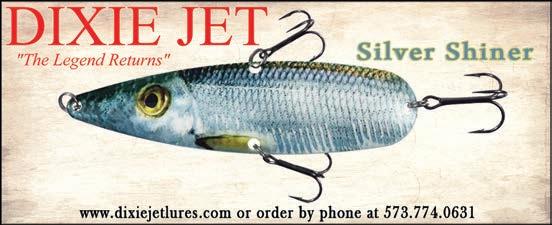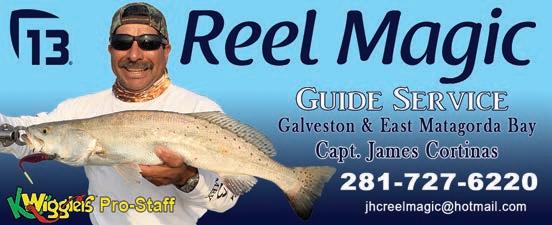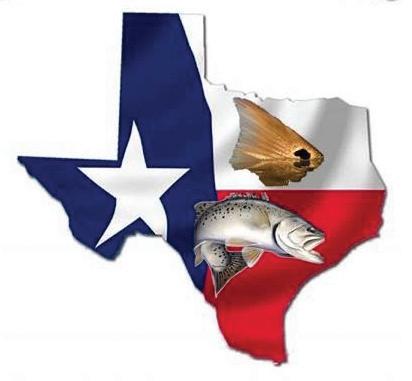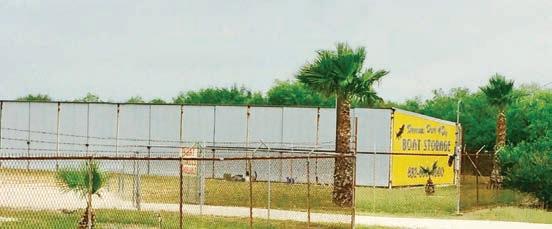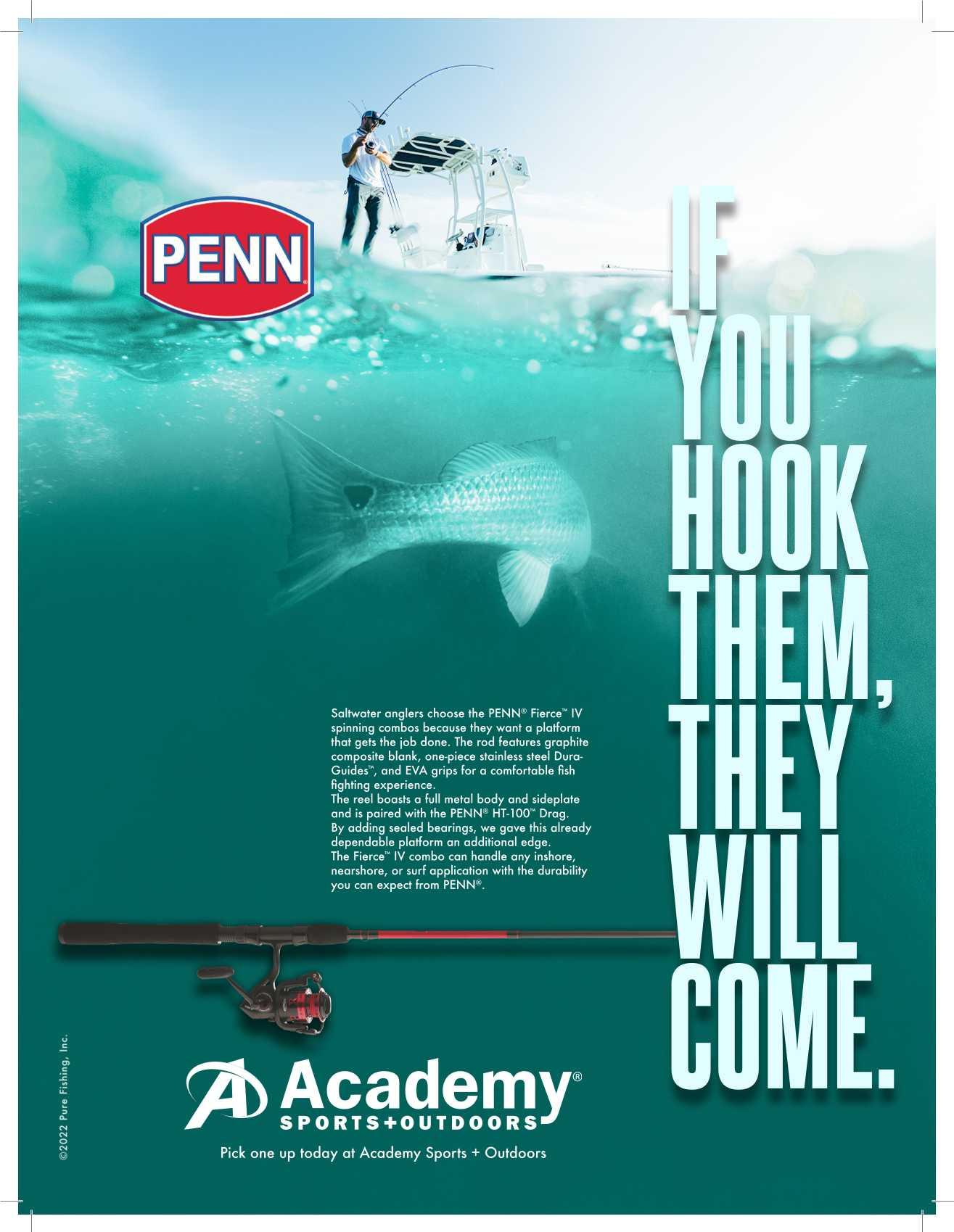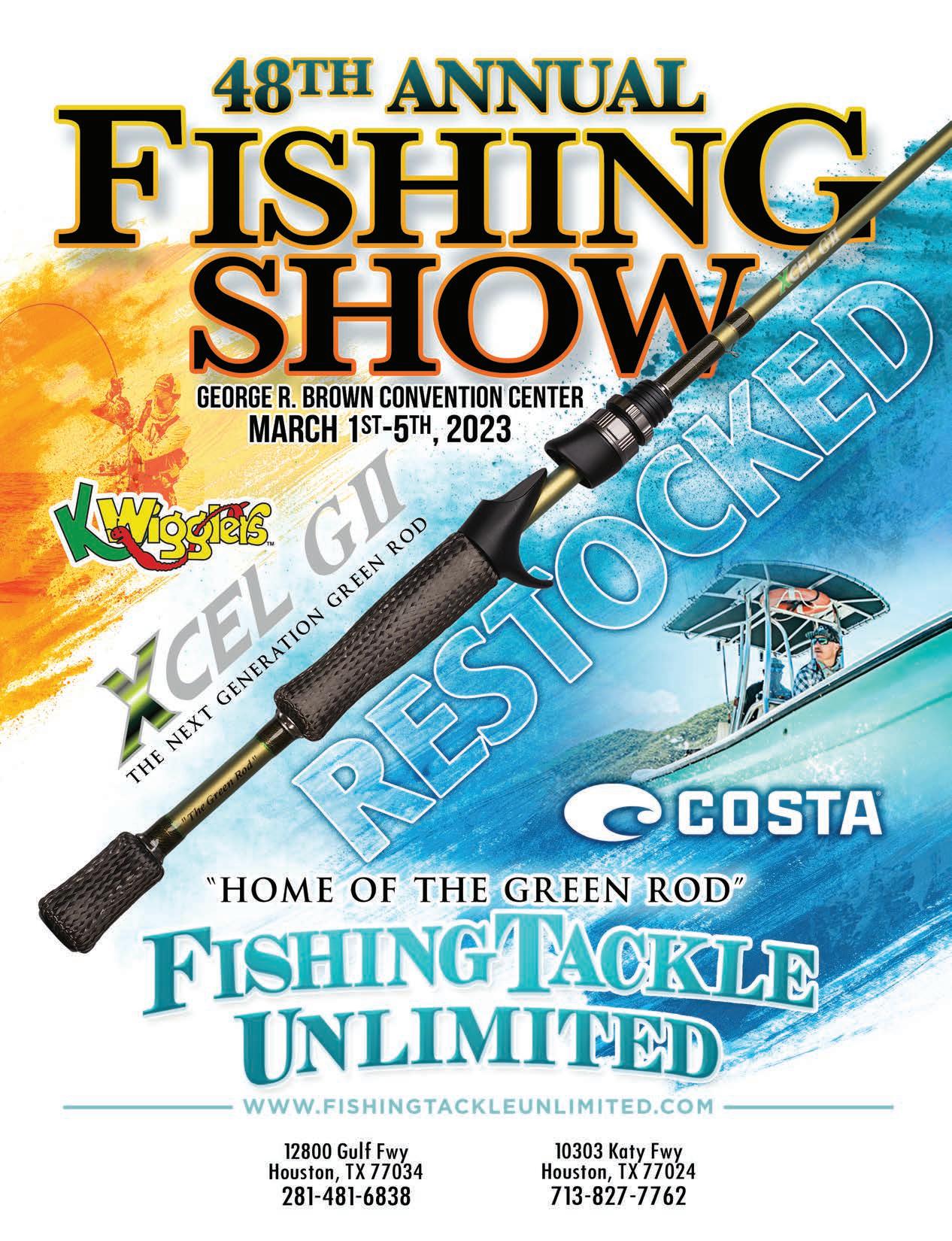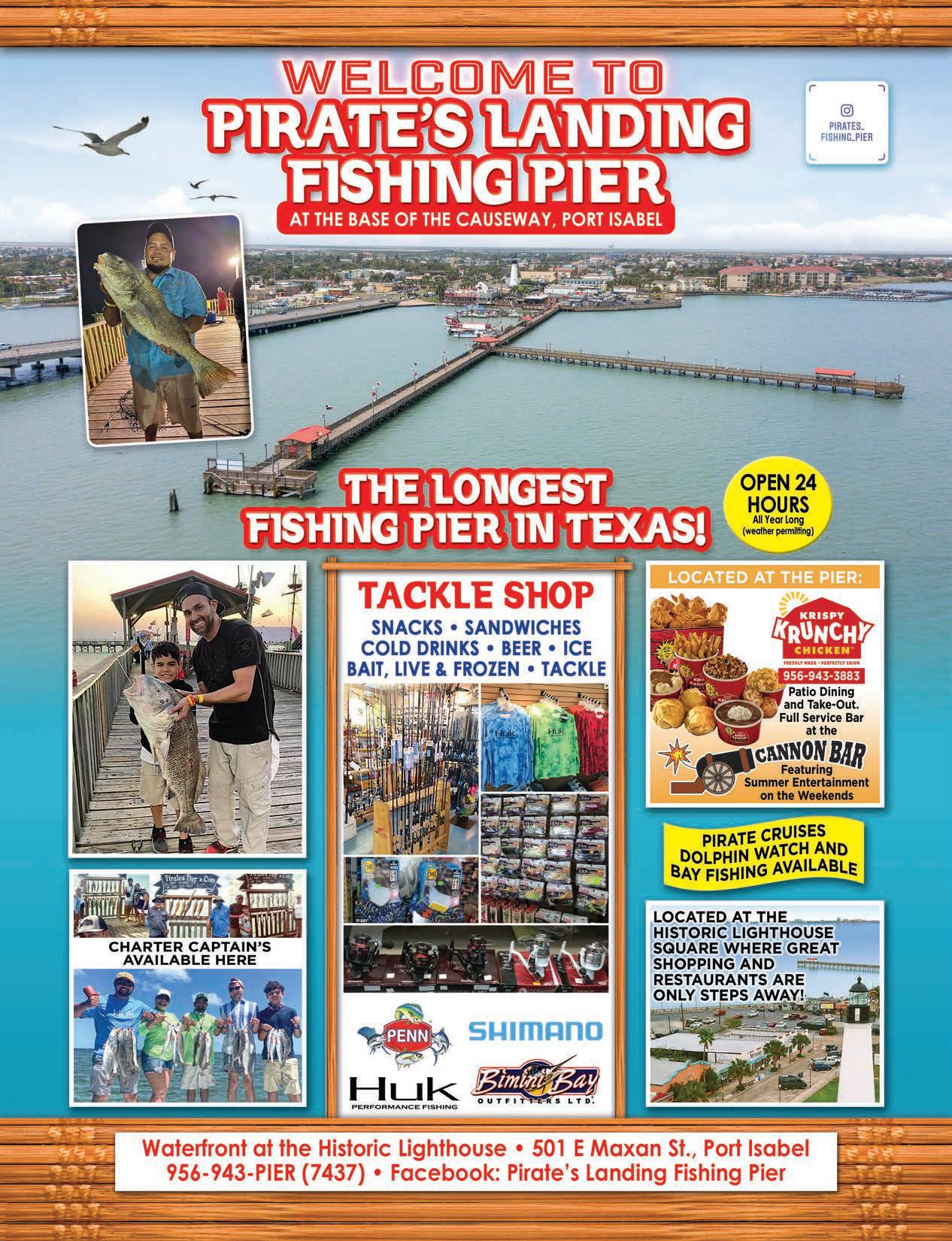




Defining the future takes creativity and intellect. But It also takes the fortitude to stand behind your ideas in a skeptical world.
Yet, time and time again, Fuji does it.
Fuji has introduced every major performance enhancement in component technology for over 50 years.


Take the KR Concept for example. It required Fuji engineers to step forward in a world full of size 30mm and 40mm reducer guides and demonstrate how a size 20mm, or even a 16mm, could do a better job.
Choose Fuji as your “go-to” components. You’ll get rocksolid durability, with the guts and brains to keep you ahead of the competition.
www.fujitackleusa.com
 KR Concept’s high-frame, small-ring design has revolutionized spinning rod construction worldwide.
KR Concept’s high-frame, small-ring design has revolutionized spinning rod construction worldwide.
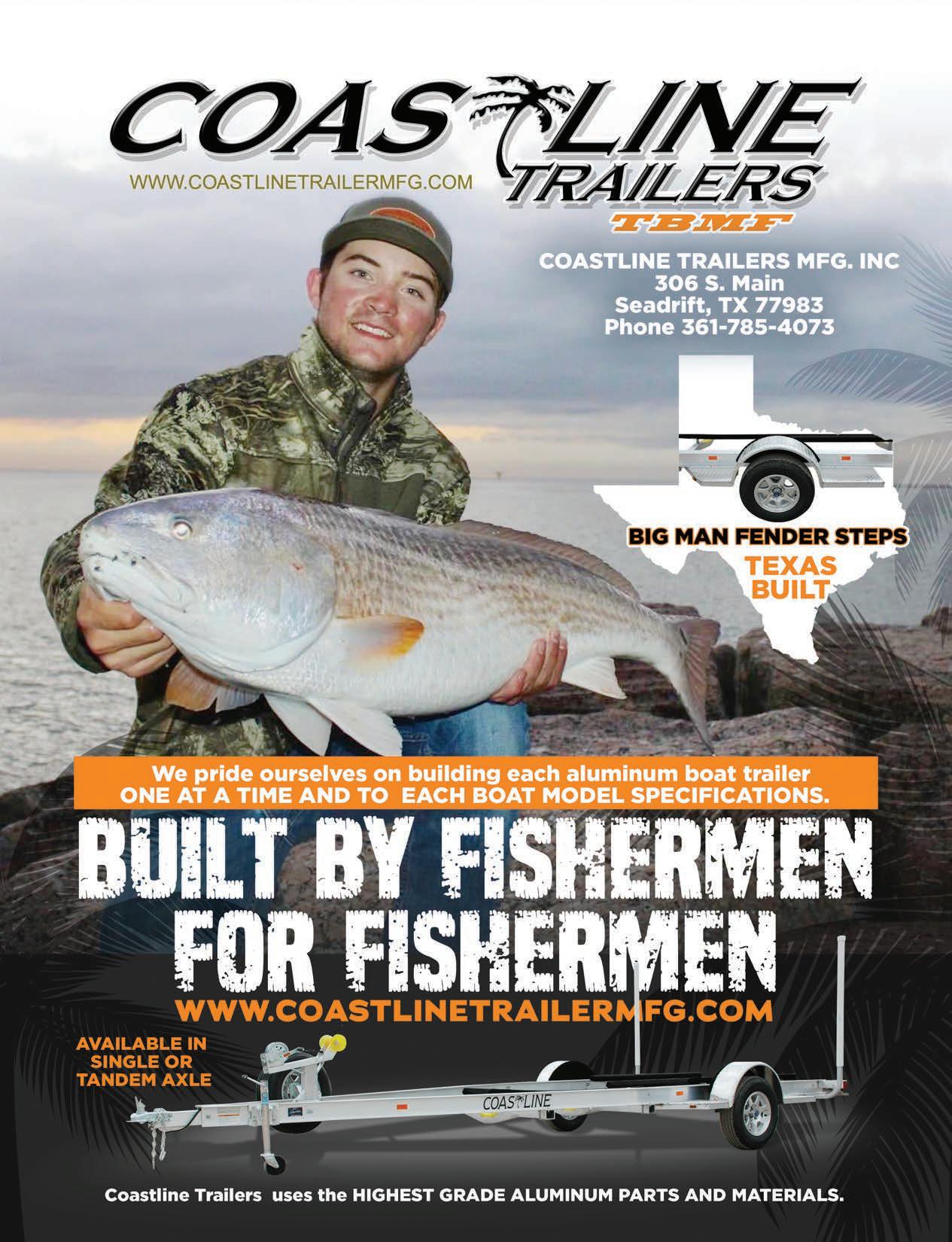
Introducing a new chapter in Total Boat Control with the Power-Pole MOVE™ Brushless Trolling Motor. These two models conquer the harshest conditions with unrivaled power, unmatched durability and unbelievable efficiency that operates with near absolute silence. Go farther. Fish harder. Make every move count.


Power-Pole.com


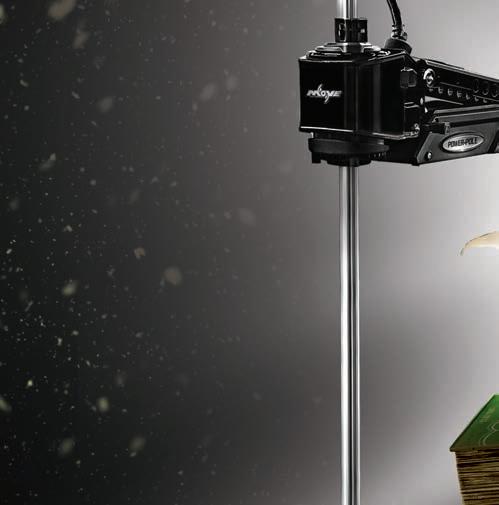








TSFMag subscriber Ruben Montenegro is this month’s cover angler. Ruben recently moved back to the Rio Grande Valley after twenty years and is relearning his angling skills in the Lower Laguna Madre. Congrats on a great catch, sir…and conservation kudos for practicing catch and release!



EDITOR AND PUBLISHER
Everett Johnson | Everett@tsfmag.com
VICE PRESIDENT
PRODUCTION & ADVERTISING DIRECTOR









Pam Johnson | Pam@tsfmag.com
Office: 361-785-3420 Cell: 361-550-9918
NATIONAL SALES REPRESENTATIVE







Bart Manganiello Bartalm@optonline.net
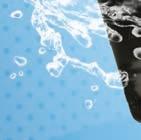
REGIONAL SALES REPRESENTATIVES
Pam Johnson | pam@tsfmag.com
Office 361-785-3420 Cell 361-550-9918






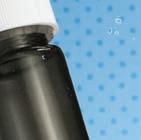














Everett Johnson | everett@tsfmag.com Office 361-785-3420 Cell 361-550-3637

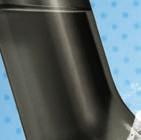

PRODUCTION COORDINATOR
Donna Boyd Donna@tsfmag.com

CIRCULATION
SUBSCRIPTION – PRODUCT SALES
Vicky Morgenroth Store@tsfmag.com
DESIGN & LAYOUT
Stephanie Boyd Artwork@tsfmag.com

SOCIAL MEDIA COORDINATOR




Jen Shive Jen@tsfmag.com
Texas Saltwater Fishing Magazine is published monthly.
Subscription Rates: One Year (Free Emag with Hard Copy) Subscription $32.00




E-MAG (electronic version) is available for $15.00 per year. Order on-line: WWW.TSFMAG.COM



MAKE CHECKS PAYABLE TO: Texas Saltwater Fishing Magazine Attn: Subscriptions P.O. Box

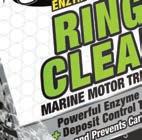
Texas Saltwater Fishing Magazine (ISSN 1935-9586) is published monthly by Texas Saltwater Fishing Magazine, Inc., 58 Fisherman’s Lane, Seadrift, Texas 77983 l P. O. Box 429, Seadrift, TX 77983 © Copyright 1990 All rights reserved. Positively nothing in this publication may be reprinted or reproduced. *Views expressed by Texas Saltwater Fishing Magazine contributors do not necessarily express the views of Texas Saltwater Fishing Magazine. Periodical class permit (USPS# 024353) paid at Victoria, TX 77901 and additional offices.
POSTMASTER: Send address changes to Texas Saltwater Fishing Magazine, Inc., P. O. Box 429, Seadrift, TX 77983.




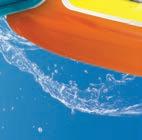



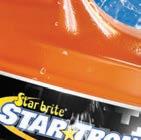


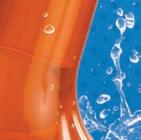
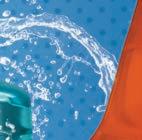


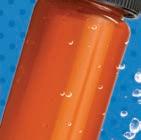




A huge banner bearing that safety slogan hung across the plant entrance where I worked in my younger years. It was a steel forging plant and a dangerous workplace. Forging hammers crashing, furnaces blasting, forklifts buzzing everywhere; smokey, dirty and hot…you needed eyes in the back of your head.
I left there almost forty years ago; the serene landscape along the ICW where I now live seems so distant and safe by comparison. But – Safety Takes No Holiday!
Late on the evening of January 27 two young men were boating on the ICW and ran out of gas near the Sanctuary at Port O’Connor. They called a friend who quickly delivered some fuel, and that’s where the story turns to tragedy.

Somehow – details are sketchy – they got their boat running and with their friend running alongside, got back underway. Within a short distance they became suddenly aware they were heading directly into the path of a barge. Taking evasive action, the boat that delivered the fuel missed it narrowly. The other boat was not so lucky and was struck and dragged under.
One young man lost his life and one was injured very seriously. The
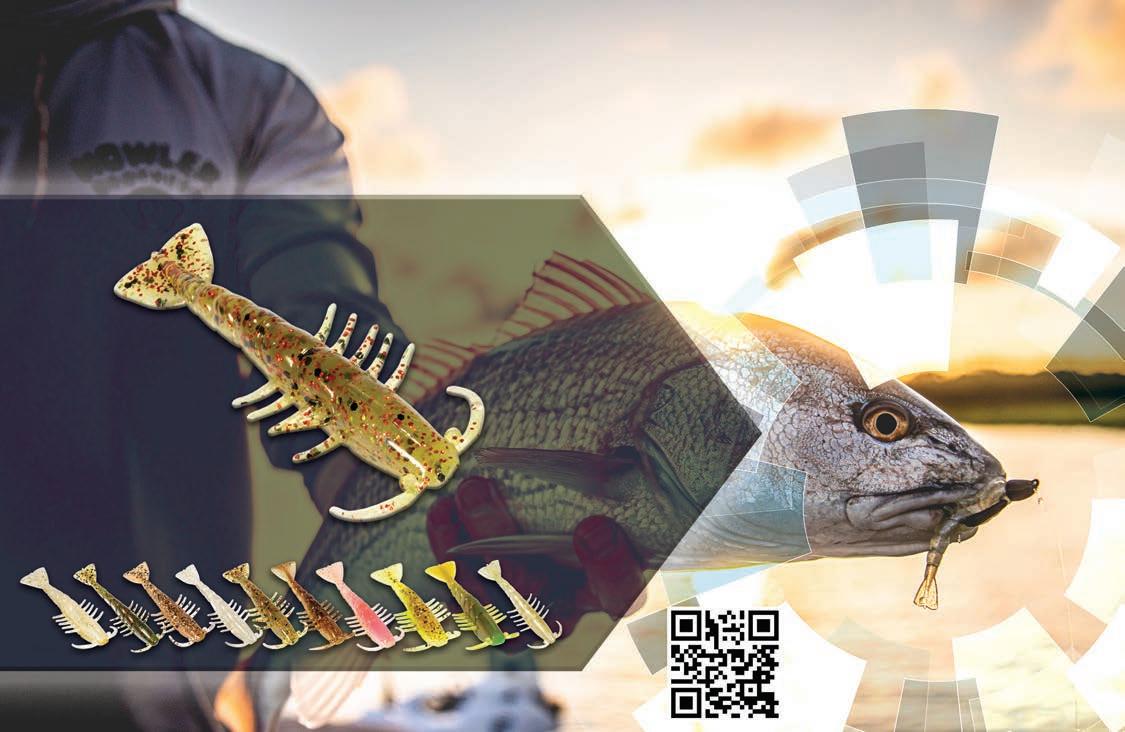

body of the deceased young man was not recovered for seven days. The young man who survived remains hospitalized in San Antonio. The surviving young man was heroically rescued by the driver of the other boat. A young woman also on board somehow managed to navigate that vessel to accomplish the rescue…with no knowledge whatever how to operate it…call it the hand of God.

So, let’s consider some facts. My purpose is not to condemn or criticize the actions of the young people involved that tragic evening. What I want more than anything is to hopefully remind and educate others.

Boating at night is potentially very hazardous. The way ahead should always be lighted adequately to preclude grounding or striking other obstacles. Lightbars are great but can cast dangerous glare onto oncoming vessels. Use that type of light most judiciously. Handheld lights are safer in many situations. Remember – do not blind your fellow boater.
Navigation lights should be switched on at all times, even when not underway. PFDs should be worn at all times when boating in darkness. Your GPS is a great navigational device but it cannot tell you the path ahead is clear, even if you are following tracks that were just recently safe. Wear your engine’s kill switch lanyard at all times when underway.
Common sense, right? But sometimes we all need a reminder. Let’s all pray for the family of the young man who lost his life and a speedy recovery for his companion.
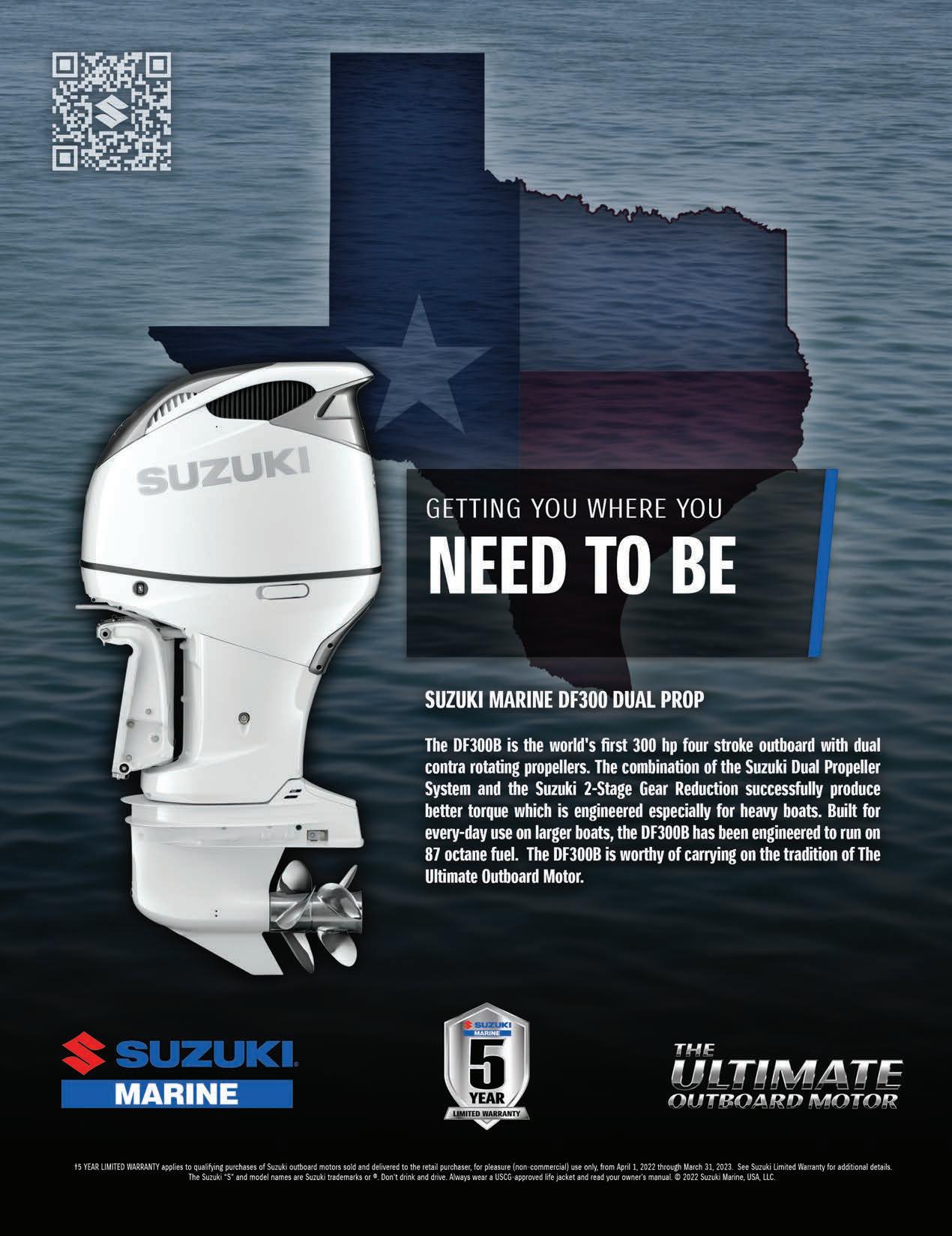
Headed back to camp with stringer of redfish. Note the half-cage prop guard; it left the upper half exposed for access to pull the prop by hand to start the engine. Not the safest arrangement but that’s what we had back then.

 Atrocious by today’s standards but a normal day’s take in that era.
Atrocious by today’s standards but a normal day’s take in that era.
Just crossing the Rio Grande into 1960s Mexico was an adventure, sure enough. But when you pushed south to Seventh or Eighth Pass, dreams of everything a rod and reel were supposed to be about became reality. Sealife of all sorts was plentiful; plentiful to the point of never imagining an end to what lay before you. The only limitations of harvest down there were how many fish you wanted to skin and how much ice survived for the trip home. No GPS, fancy gear, or internet reports needed; the fish were just there, just as they were supposed to be, just as they had been for eons along the entire Gulf coast. Legends were made by many who came before us, but most are long-forgotten or simply dismissed by more recent generations as rocking chair embellishments. However, most stories are mostly real… and so is today’s obvious denial of what once was.
Back then, after crossing the border, it didn’t take long for electrified civilization to fade into the horizon after you left the old Salt Mine Road. The cutoff was about ten miles south, named for the salts evaporated from the flooded fields coursing along its way. It took you all the way to Second Pass and avoided the “experience” of the second Federale checkpoint. The beachfront gradually became more primitive and tidal currents laced through drifts of tire-swallowing sand. Other adventurous sports made that untamed journey and many ingenious ways were devised to negotiate the ever-changing hazards. We pulled a little airboat and used it to push our trucks through low-tide crossings and high-tide dunes. Others rigged up pontoons and even makeshift propellers on their vehicles, while some floated their boats across the guts on trailers with a three-wheeler strapped in the bow, using that to
tow down the remaining seventy miles.
All of the cuts could be good, but prime were the Third and Eighth breaches from the Gulf to the Laguna. There was a small oasis at the Third, the famous Hotel Del Mar, which housed many a salty character over the years. While wading the mouths of these passes, struggling for footing on ever-shifting sandbars, you watched in awe as fish suspended in lifting rows of shorebound waves. At times the swells were filled with shadowy color as entire schools of fish rode the incoming tide. Redfish mostly traveled tightly together and would cloud the Coke-bottle-green water with a copperas hue. There were also silver and black missiles cutting through the breakers – big surf trout hellbent to crush baitfish rafting in the shallows.
We mostly just threw spoons or soft plastics and that was all you needed. A Tony Accetta Number 5H spoon reached beyond the whitewater and was often met with violence as soon as you engaged the reel. The first time I took my brother down there he did what most would do – a big no-no in that setting. Freddy walked out on his own right at dark into one of those classic “every cast” deals. With as much frenzy as the fish, he strung everything he landed until he could string no more, then dragged them back into camp expecting his full glory due.
“What have you done and what are you going to do now? You just don’t do that down here! We don’t clean fish after dark...we still have several days to go and you just wasted a bunch of our ice.”
In other words, back then you planned to manage your catch, not just catch whatever you could manage.
We mainly just worked the passes as you didn’t need to go anywhere else, but the airboat took us deep into the rich waters of the Laguna.
Ours was a little step-hull made of plywood. It only had a half cage on it because you had to start the motor by pulling on the prop by hand…but when you got her up on that front step she would scoot. We ran down the surf too, timing the ebb and flow of waves and zig-zagging sandbars all the way to La Pesca, but exploring the deserted back bay areas was always compelling. During high water we’d cut over miles of oyster reefs about a foot deep to reach some of the better tidal guts. Reds on top of the shell could be so thick that you had no choice but to run on their backs as they had nowhere to go. If you shut down they scattered, but they’d be right back surrounding the boat again within minutes. They didn’t seem to know what it was. On the edges of those guts we could sight-cast snook up to twentyfive pounds. You had to be quick and accurate though, if you missed that snook by a foot a trout would get it and we had all of those we needed in the surf.
Flounder were there, too. Lots of them. A local native who lived in a driftwood lean-to with his family put us on them at Third Pass. Before every trip we collected clothes, toys and anything else we could pack to give away. They watched over us. One evening he strolled into our fire asking if we wanted any flounder. He was soon back with an incredible string, and I say string because it literally was one, just string. We followed him back out, and armed with an old knife wrapped to a stick with electrical tape, he simply blind probed the sand under the illumination of an endless Milky Way. The spear bucked almost constantly. We later brought lanterns and shamelessly filled tow sacks. You just stood still waiting for the sand to clear, then picked out the biggest one to settle at your feet. Other predators scared the heck out of you too, mostly big snook running bait up on the shelf. The night was loud with sounds and smells of nature’s brutality.
Some trips we carried only redfish fillets home, other times only snook or trout, but flounder was the other white meat breaking cooler hinges. Those great hauls were always expected, but things changed rapidly after the beginning of the “ice age.” The Mexican government started building ice plants near the coast, enabling commercial fishing to meet the demands of an eager market. It was a signal event that changed the entire fishery. What was would never be again.
Years later we flew over the area in private planes and recoiled over the endless grids of fish traps. They were very efficient and huge schools of fish were herded into them by small boats. Much of whatever came into the passes didn’t make it back out through curtains of gill net. Fishing was quick to slow down. After that, and after a boy got killed going through the airboat prop…well, we just quit going down there.
Fishing, as we know it today, is still quite awesome and actually even improving in some aspects. But compared to yesteryear stories, such as the above shared by Capt. J.D. Whitley, what we experienced in recent years pales in comparison to fairly recent decades.

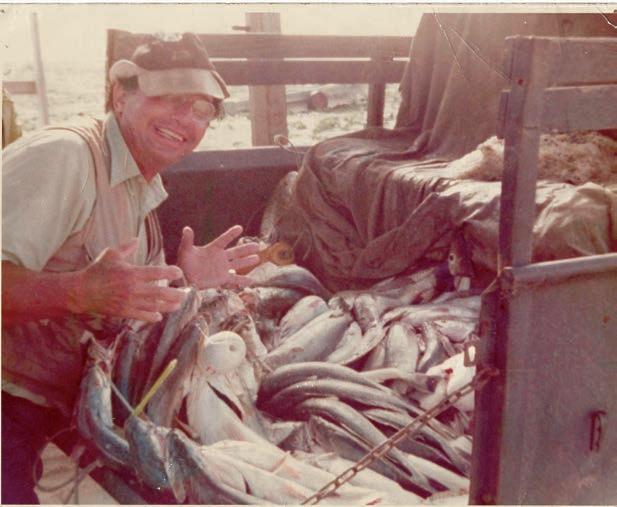
What was happening down in Mexico then was also happening here shortly before. Takes of a hundred fish per angler wasn’t even newsworthy. Tarpon and sharks hung rotting on picture racks, bay turtles churned through local canning factories, and market tables often heaped with fresh
 Managing the catch was more of an ice management consideration. Hauls like this were typically only made the last day before heading home. Our old airboat was step-hull design, built of plywood. When you got her up on that front step she would really scoot.
Managing the catch was more of an ice management consideration. Hauls like this were typically only made the last day before heading home. Our old airboat was step-hull design, built of plywood. When you got her up on that front step she would really scoot.


pike (snook). Giant sawfish roamed the bay floor and monstrous jewfish guarded nearshore structure.

Unfortunately, in a mere blip of geological time, catches became limited by much more than just ice. Today we might be happy to burn twenty gallons of fuel hoping to find three reds and three (still five in some places) trout. In perspective, we have industriously created our own version of Mexican ice plants, which just as then, rapidly helped change what always had been.
Myriads of nicely-lighted ramps launching fifteen-year boat loans, fullcolor satellite imagery down to pothole level guiding the unseasoned, glossy billboards highlighting newly-filled-in canal lots over old wetlands, egos betraying fish on the internet and money tournaments vying for what’s left in a booming recreational industry have indeed carved some bleeding wounds. In short, all of this new “technological ice” has created an insatiable firestorm of competition for the resource. And we now have to own what we have done.
In perspective, those old salts never saw those ice plants and their impact coming. We really didn’t see our future coming either, but in today’s information age, we don’t need a crystal ball to see ahead aplenty. If we’ll just look.
We have also seen other ‘signal events’ which have altered our fishing future, but I’ll leave that up to the reader to consider what has changed in recent years.
Let’s remember though, just as there were men such as J.D. Whitley (narrator of the story above) who blazed those adventures before us, there will always be new recruits eager to blaze whatever lies ahead, or whatever we have left to blaze. Hopefully they can bring new ideas with some enhanced appreciation. There’s nothing like the History Channel to peer into the future, so let’s try to go there with eyes a bit wider.
If we are going to live and die with faults, let them be faults of passion. Fishing qualifies, and so does being passionate about the stories our kids should be able to tell. Let’s get out there and punish that new rod and reel, but don’t waste that “ice” as we still have several days to go. Let’s try to make it last. See you there…





Viaggio’s Diamante Series stands alone in the market as the most luxurious and well-built pontoon boat available! With our exclusive Matte Metallic finish and heavy 3” rail system, the Diamante is built to last and turn heads every time you hit the water.


[dee-a-mont-eh] (noun), Italian for Diamond







In Texas, March weather has a notoriously fickle aspect. Most years, conditions change rapidly and repeatedly during the Spring Break month. With the situation regularly mutating, catching fish consistently on lures in the saltwater bays and waterways of the Lone Star State can prove challenging.
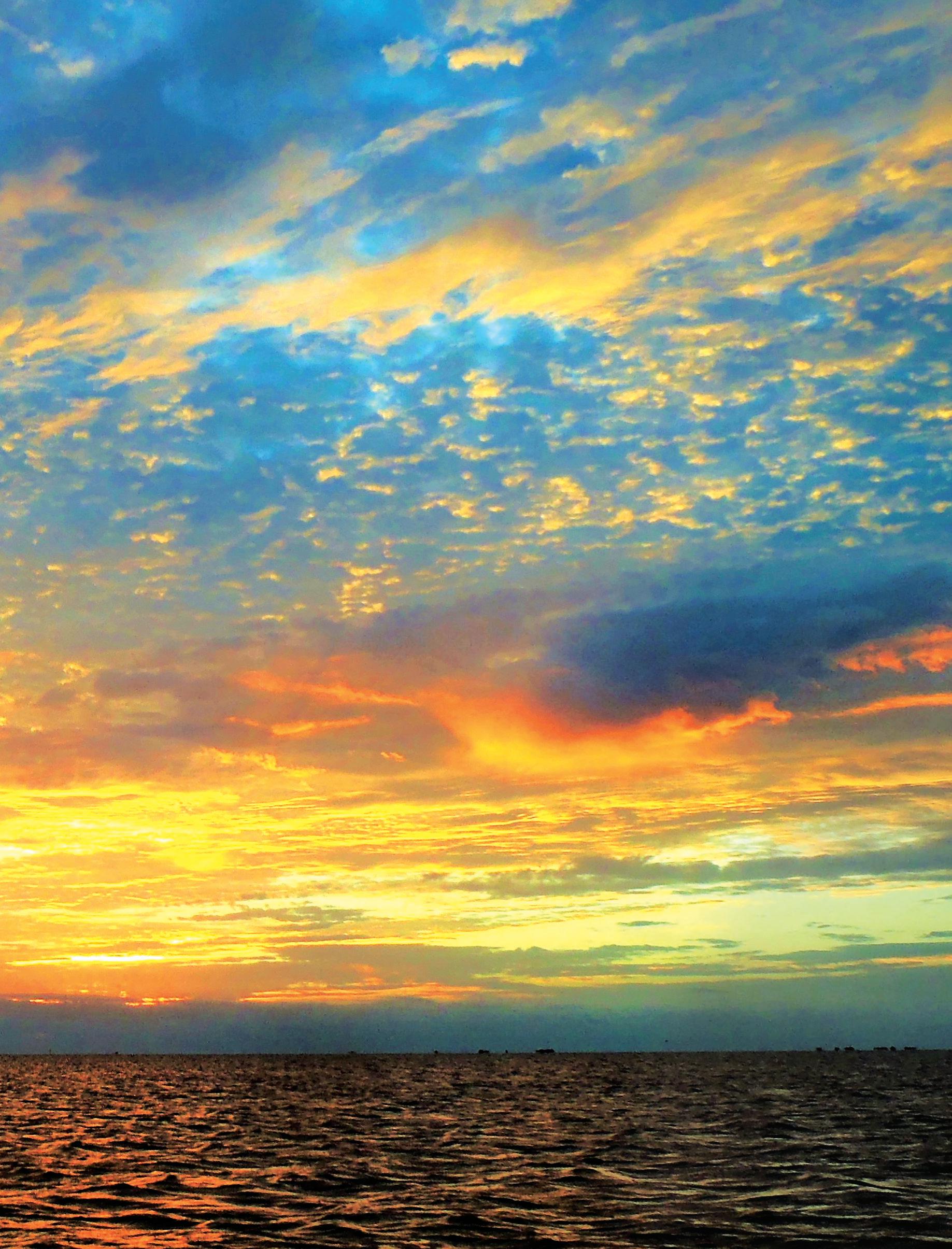
For anglers using lures to target speckled trout in Texas, good March weather usually provides a context for fairly easy catching. Those of us who target trophy specks recognize the last month of winter/first month of spring as one of the best. Generally, good catching weather this month includes relatively light southeast winds and moderate air and water temperatures.
When the weather gods behave graciously during the transition from winter to spring, anglers in the know often catch decent numbers of mature trout on twitchbaits like Paul Brown Lures, Soft-Dines, the Barboleta Lele, and others. On the best days, the big trout attack floating plugs with deadly intentions. Because many trophy trout enthusiasts display adept skills with lures like these, this scenario plays right into their wheelhouse. But ideal weather conditions aren’t the norm in this month of change. In most years, cold fronts continue to sweep across the coast well into spring, so anglers heading out to fish the brine this month usually cope with the changes generated by frontal passages. In other years, a persistently strong onshore flow develops during March, confounding the efforts of anglers with its intensity. In either scenario, folks hoping to keep the catch-rates high need to adjust their strategies intelligently, to match the ever-altering circumstances of the moment.
The passing of a cold front generates a familiar weather cycle. As the front approaches the coast, warm, balmy winds blowing from the Gulf onto land normally increase in velocity. In the immediate aftermath of the passage of the frontal boundary, a cold, crisp breeze from the north whistles with velocity. Late in the winter, cold fronts usually lack the severity they possess in January and February, and the north winds often fizzle out fairly quickly, leaving bluebird skies and dead calm conditions in their wake.
Many people relish the idea of heading out onto the bays to fish when winds fall silent, but catching fish on slick waters under bright skies can prove maddeningly difficult. Wise anglers adjust their tactics significantly when fishing in conditions like these. The difficulty of coping with this kind of weather starts with a confounding uncertainty
related to which kind of lure likely offers the ripest potential for catching. If the passage of a cold front interrupts an excellent topwater bite, and water temperatures decline to values down around sixty degrees, floating plugs sometimes work well in the lull after winds die down to nil. Anglers attempting to catch trout on topwaters this month when the surface of the bays looks like glass should consider doing two things to increase their chances for success, one related to the type of lure selected, the other to the type of presentation used to deploy it.


In general, small topwaters like the Spook Jr, Baby Skitter Walks and She Pups work better than larger ones this time of year, probably because they mimic the primary food sources of trout better than larger ones. So, anglers should select small topwaters when trying to urge blow ups in dead calm conditions in March. And, they should work those lures at a snail’s pace. In many cases, trout show more willingness to attack a lure on the surface in calm conditions when the lure barely moves at all. Gently nudging the head of a topwater back and forth as slowly as possible for multiple casts requires supreme patience from the person holding the rod and reel, so many anglers benefit from switching to a slow-sinking twitchbait during the lull in the winds.
Paul Brown Lures and similar offerings work well at times during this part of the March weather cycle, when worked at a mediumslow pace, just under the water’s surface. In the worst cases, though, trout sit on the bottom with their heads down, refusing to rise and/ or cast their eyes upward to where these lures pass over them. In such situations, when bright skies, dead winds and slack tides diminish the appetites of the fish, anglers should throw soft plastics. In the most negative situations, with high, ballooned barometric pressure in March, dragging soft plastics rigged on sixteenth-ounce heads on the bottom, using soft twitches to hop them up every few feet or so proves the best way to make inactive fish take a bite.
A soft plastic rigged on a super-light jighead and dangled under a small cork can work even better to keep the bite-rate at a reasonable level during the calm lull. This is true in all months and at all temperatures–the cork and the jig sometimes solves the tough-bite puzzle better than all other things. In this specific scenario, a slow, subtle presentation, one which doesn’t use the cork to create too much commotion and which involves fairly long pauses often works best.
Contrastingly, anglers deploying the cork and the jig to cope with the other negative brand of weather which commonly afflicts our efforts this month will use faster, more vigorous presentation styles. When persistent, strong onshore winds linger for days and muck up the water, anglers hoping to find a way to catch mature trout should consider deploying soft plastics dangled under corks. The noise created by the cork coupled with the suspension of the lure in the faces of the fish facilitate the effectiveness of this method when big waves and dirty water create difficulties for trout on the hunt. Stronger winds and bigger waves elevate the need for heavier jigheads, whether the worms hang under corks or not.
Certainly, in some ugly conditions in March, when moist winds howl under cloudy skies for days on end, some Texas anglers maintain decent catch-rates by throwing soft plastics, usually paddletails, rigged on fairly heavy jigheads, which help keep them down in the water column. Strong winds tend to pull light offerings to the surface. This fact generally negates the potential efficacy of slow-sinking twitchbaits in the warm, windy kind of
The captain caught this pretty trout on a cold, dreary day following a late-season cold front, using a soft plastic.
weather which often occurs this month.

Keeping a Fat Boy or Catch 5 under the surface when wind speeds ramp up to twenty knots or more becomes difficult, even impossible. Consequently, fishing these lures in a conventional manner in such conditions makes little or no sense, as they behave essentially like topwaters. One way to cope with strong winds and deploy a slowsinking twitchbait involves taking an original Paul Brown Lure and bending its tail sharply down.
With its tail bent downward to almost ninety degrees, a Brown Lure will stay under the water better when the March wind screams like a banshee. Deploying the lures with sharp strokes of the rod tip, similar to the way one would activate a popping cork or a lipped crankbait, makes the bent lure spin. Because it moves in a circle rather than side to side, it stays down in the water better, and many of the best trout anglers recognize the fact a bent-tail Corky will produce strikes in strong winds, when other slow-sinking twitchbaits won’t.



Onshore winds of high velocity also elevate the potential for catching trout on floating plugs. Air and water temperatures in such weather conditions often rise into the upper-sixties or even the seventies while the calendar walks from winter into spring, and these values urge fish to hunt actively. Anglers throwing topwaters while onshore winds howl this month should consider size and presentation, just as they do when winds fall silent.
Larger, noisier plugs like She Dogs, full-sized Skitter Walks and One Knockers make good sense in this situation. These kinds of lures prove easier for trout to find in tall waves and murky water than the smaller, quieter ones. When presenting full-sized floating plugs, smart anglers work them with high levels of intensity, using sharp, deliberate strokes with the rod tip to make the heads of the lures snap from side to side
and displace plenty of water.
The most effective presentations usually involve twitching sessions which include a reasonably high number of strokes, up to eight or ten or so, to get the lure wobbling back and forth, generating considerable noise and commotion. Long pauses between twitching sessions also elevate the potential for earning strikes, which often come as sudden and violent explosions, while the lure bobs up and down on the waves.
For this reason, a floating plug carrying rotating props sometimes works well when strong onshore winds persist in March. These lures make lots of noise when anglers use deliberate, focused twitches to activate the props, and they provide flash when bobbing on the tops of the waves, the blades of their props twinkling as they slowly rotate. Similar to the way the cork and the jig sometimes solves a seemingly impossible bite-puzzle, these slush baits sometimes save the day for anglers this month.
Generally, trophy trout anglers who exclusively use lures love fishing through the gateway to spring because of the excellent potential the transitional time offers for catching the fish we most revere. Getting the job done this month does require thoughtful, sometimes specialized, seemingly extreme tactics. Depending on which kind of tough March weather prevails, these tactics vary widely in their basic attributes, demanding versatility from the anglers who deploy them.







Test run your outboard motor before your first trip and check out all your boat’s functions.
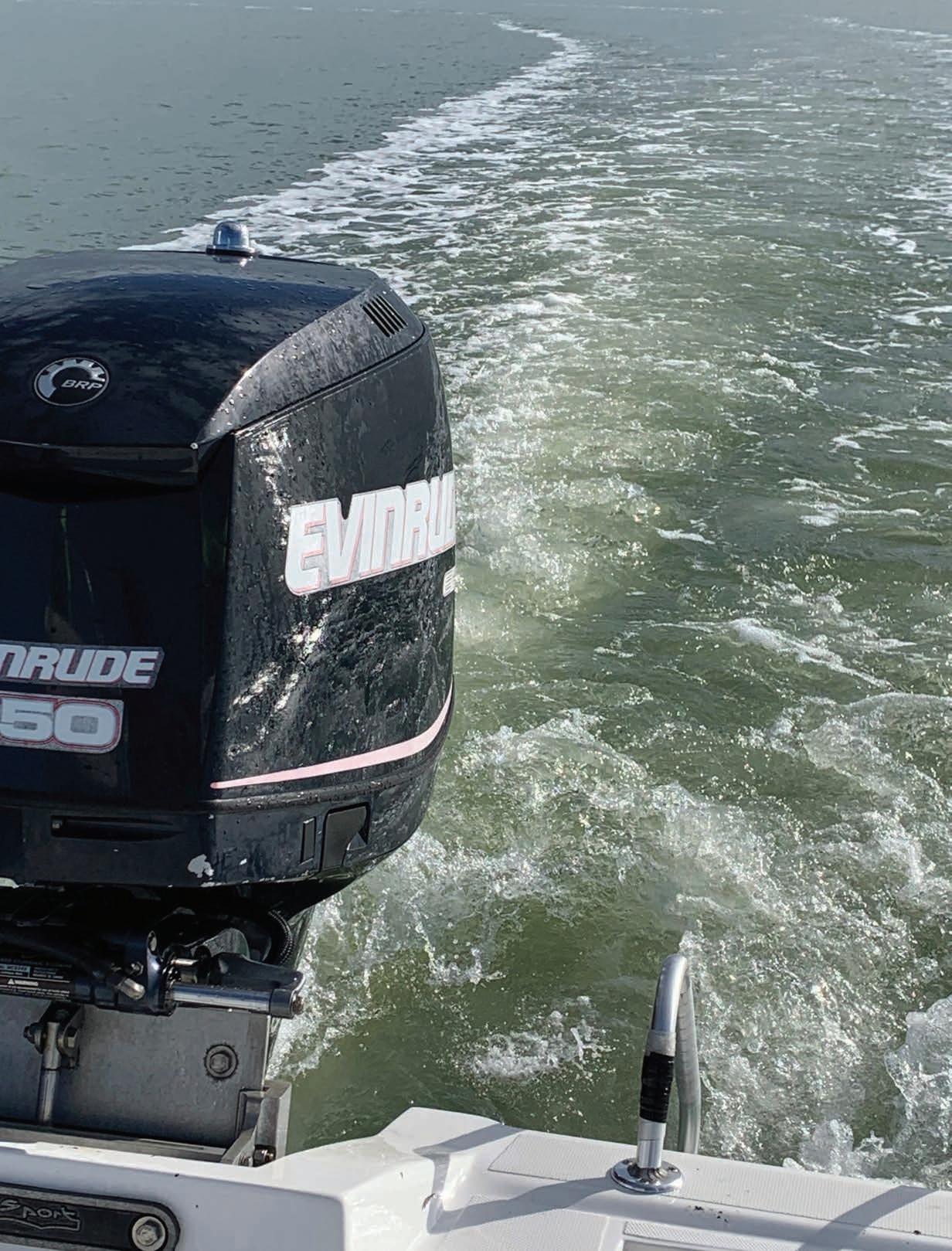
Awise man once told me, “Plan your work and work your plan, that’s the key to consistent success.” For many years I have adopted that slogan and it’s never let me down, in fact it has saved me on more occasions than I can remember.
We have all been in situations where we made a decision to take a shortcut or choose the easy way out, only to have it bite us in the “end, both literally and figuratively. I must admit, personally, I wasn’t always the guy who planned ahead or had all my ducks in a row, I skated by on many occasions but eventually I learned my lesson. At this point in my life being properly prepared for a particular activity, such as fishing or hunting, is almost as important as the activity itself. As we head into the much anticipated early spring fishing season it’s critical to take a look at the things that will help ensure safe and successful time on the water.
It goes without saying that many fishermen will emerge from the deep winter slumber like a bear coming out of hibernation. Those first gorgeous days of March will have many anglers scurrying around trying to knock the dust off gear that was stowed away during hunting season. In the rush to get on the water many things will be overlooked and that certainly will contribute to the outcome of the day. Very few things will cause fisherman heartache like the regret of not taking care of their business and knowing that everything wasn’t exactly right before they hit the water. From boat trouble to losing a career fish, most of these things can be prevented and all it takes is a little preparation. Everything from the boat, motor, trailer, tackle, and electronics all need to be ready to ensure that the day on the water will be the best it can be.
Easily the largest piece of gear that needs to be checked before even thinking about heading for the water is your boat motor. The absolute worst thing that can happen to a boat motor is to sit up
and not be run for long periods of time. We all know the trials and tribulations caused by bad gas and ethanol, so fresh fuel is imperative, especially if you didn’t treat the fuel already in the tank before putting the boat away for the winter. Check all your controls, such as tilt and trim, bilge and livewell pumps, to make sure they function properly and then run your motor. Take your boat down to a ramp away from the crowds and just run the motor while the boat sits on the trailer, or put the motor flushing muffs on and run it at home. However you go about it, just run it before you get ready to make your first trip of the season. I can promise you nothing ruins a day on the water like motor issues that could’ve been prevented.
Next in line on the list of “preventable issues” has to be batteries, this is one of the leading causes for many of the problems that boaters and anglers face. If you didn’t stow your boat with some sort of battery maintainer taking care of cranking and trolling motor batteries you could be in
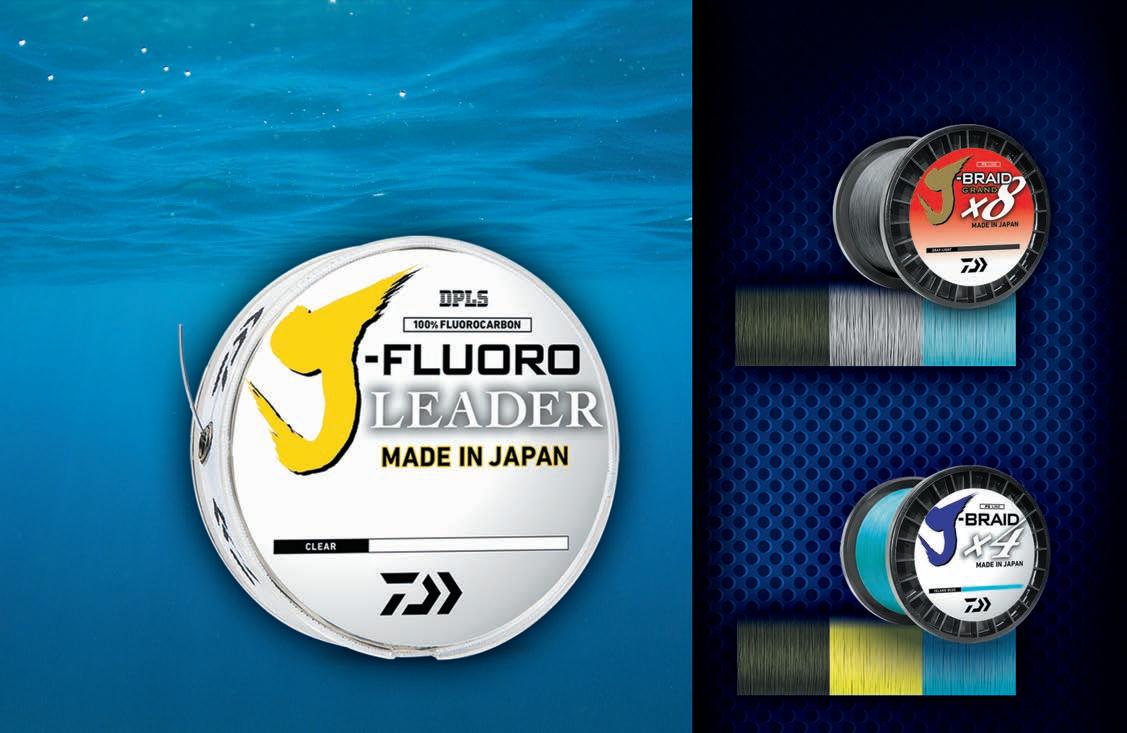
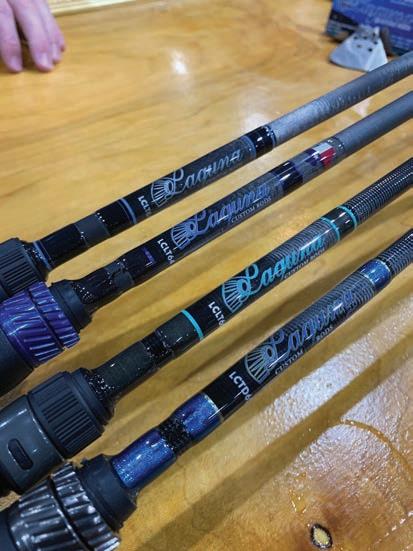
 Nobody wants to find out their waders are leaking on the first wade of the year, be sure to inspect them and repair or replace is needed.
Nobody wants to find out their waders are leaking on the first wade of the year, be sure to inspect them and repair or replace is needed.
for an expensive surprise before you even leave the garage. Battery maintenance is critical and should be near the top of the list of things to be checked before every trip. Corroded battery terminals, dry cells, faulty charging practices as well as others all contribute to poor battery performance and can all be prevented with just a little time and effort. Keeping your electrical system in top notch shape is a must so don’t skimp out when it comes to your batteries.
Now that you have made a thorough inspection of all the mechanical and electrical systems, take some time to look at your tackle. One of the things on top of my own personal list is inspecting the line on all my reels and changing out anything that is suspect. Fresh line matched with new leader material and quality knots are essential parts of your gear that are too easy to control. The look on an anglers face when they lose that fish of a lifetime due to deteriorated line or a frayed leader they didn’t want to replace says it all. The only other look on a fisherman’s face that is more easily read is the one that says, “My waders are leaking,” so inspect those as well. A great way to do it is getting in a swimming pool. It’s certainly worth the effort to make sure everything you can control is taken care of and ready for the task at hand. There are things out of the angler’s control that will happen, that goes without question, but there is no worse feeling than realizing you could have prevented something but chose to not take the time or effort to do so.

While on the subject of tackle and gear I wanted to share a couple of items that I recently put my hands on and really like. The great folks over at Laguna Custom Rods will debut some

new rods at the annual Houston Fishing Show March 1-5 and they have plenty to be proud of, for sure. New for 2023 will be the debut of their 100% American made blanks for the Light Texas 1, Trident, and Latis models. The new blanks are incredibly light and well balanced as well as more durable than you might think based on how little they weigh. As always the finish and detail on these rods meet the high standards of the guys at Laguna, they make as good a rod as one can find on any market and now they have American-made blanks to go
 ZMan and Down South soft plastic lures have been producing well for me the last few months.
ZMan and Down South soft plastic lures have been producing well for me the last few months.
along with that quality. Certainly do yourself a favor and give them a look.
There are also a couple of soft plastics to be sure and check out from both Z-Man and Down South Lures. Both of these manufacturers have done a fantastic job keeping their baits flexible and lifelike as well as insanely durable. The “pinfish” color on the Z-Man MinnowZ is a top notch bait, especially for flounder. I have also been very impressed with the new color Down South Lures added to their lineup called Big Poppa Pearl, it has a very natural look to it and it’s done well for me so far this year. If you have not already tried these lures give them a look, I’m sure you will be as impressed with them as I have been.
I’d like to add one last thing to this column and it certainly deserves more than a passing thought, and that’s being safe during this unpredictable time of the year. The weather in early-spring can get bad in a hurry and it’s certainly not anything to be taken lightly. The excitement of the day on the water can often times lure us into a false sense of security. Water temps will still be very cold and that spells trouble if you end up taking a plunge for whatever reason. Being aware of your surroundings, wearing a quality Personal Flotation Device, and keeping an eye on the weather are all very important factors for anyone enjoying the water. Make sure you have some sort of communication device with you and always let
someone know where you plan to be and when you should be back. If you don’t prepare for anything else, at least prepare for that because it could the difference in a successful day on the water or one you would like to forget.

Prepping Boat and Tackle for First Springtime Trip Success


The BKK TITANRIDER is a versatile and durable hook designed for weedless-style rigging of large soft plastic baits such as swimbaits and tubes. It’s built with BKK’s exclusive Diamond Series steel. Features include a forged shank for increased strength, Super-Slide coating that enhances penetration by reducing friction, a locking spring, adjustable silicon stopper to hold your bait in place, and a deep throat with a longer and sharper hook point section. Field-tested by expert anglers worldwide, the BKK TITANRIDER is the best hook for anglers who want to maximize hook up rates while weedless fishing with plastic lures.
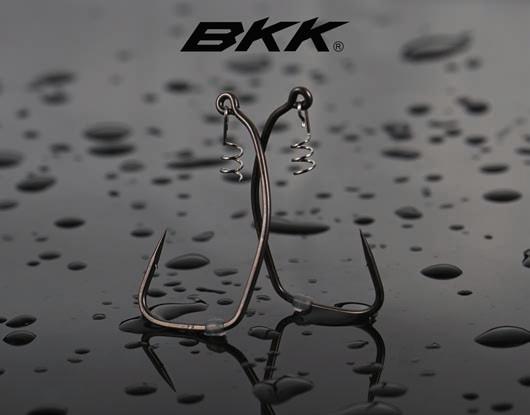
Phone 409-697-6111
Email wakesndrakes@yahoo.com
Website wakesndrakes.com



Good friend Lawren Garza and I were invited to join a group from Falcon Rods to fish for peacock bass in Brazil’s Amazon River system. I had reservations; I really wasn’t sure if I was up for it, I’d been told you had to be prepared to throw large “woodchopper” topwaters for hours on end and that didn’t really appeal to me. I often get tired after only an hour throwing smaller surface plugs, so how was I going to pitch a ten-inch plug all day long? October 12, 2022: The Journey Begins – Air travel restrictions due to Covid were still partly in effect, which complicated flight availability. Our itinerary therefore was rather roundabout in order to finally arrive at our destination - Houston to Atlanta; Atlanta to São Paulo; then São Paulo to Manus. We elected to remain a day and a half to do some shopping for lures we would need, and for touring and sightseeing, escorted by Jorge Gomes our host, tackle store owner, and Amazon River outfitter. His outfitting business is Outfitter owner “Sucuri Pesca eAventura.”
The downtown area has lots to offer with history dating to the 1800s and earlier, the opera house located across from the square was constructed in 1903 and is absolutely beautiful.



We also went to the mall, not at all like ours. It is the centerpiece of the town, a social gathering place with lots of shops, restaurants, even a pharmacy and bars. We shopped at Jorge’s tackle store and had dinner at a very nice restaurant in the mall. The food was outstanding.
We departed from Manus to Barcellos on a small plane arriving at the majestic Amazon River! Arriving at the dock by shuttle. The boat sat tied to a floating barge awaiting our arrival. Down a brick stairway we traveled to a wooden plank suspended over a fifteen-foot drop to board the boat. Not OSHA approved, but it worked.
After unpacking, we all met on the upper deck to begin assembling our rods, reels and pack our tackle boxes with the new lures we picked up at Sucuri Tackle shop. The selection of rods Falcon provided were 5’7”, 6’3”, 6’6”, and 6’9”, all in heavy actions. I brought my own reels and I strongly recommend reels of 150 size, with at least 7:1 and faster retrieve ratios. Peacock bass like the lures worked fast and I found it challenging at first to maintain rhythm. Do not stop if they blow up...reel faster. No leader line required, just tie your braid direct to
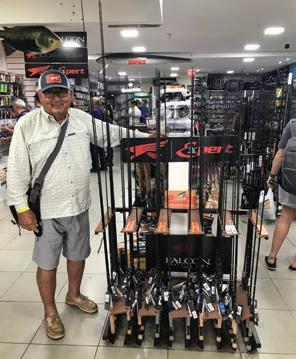
the lure. I was rigged with 40# braid and had no problems, some preferred 65# braid. We were set for the morning adventure to fish the Rio Negro for the next six days.


Up at 6:00 and ready for the day. Each morning at breakfast we were presented a spread of fresh fruit, eggs, several meats, freshly baked rolls and other pastries. After breakfast we would pack lunches from the spread and head down to meet our guide.
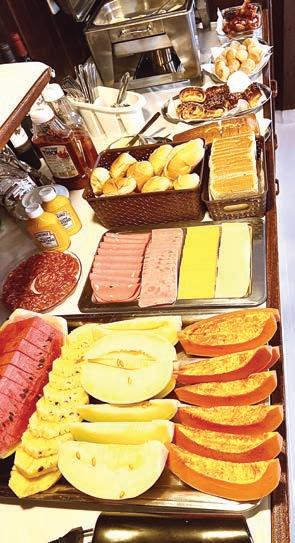

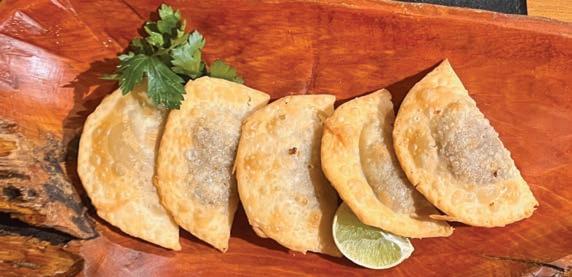
Our gear and drinks were already on the boat, handing our lunches to the guide, we were soon underway.
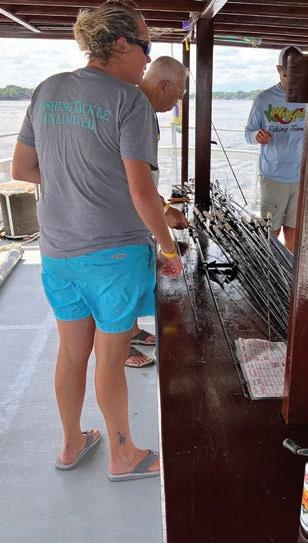
Fishing the Amazon is much the same as any other water; it’s all about structure - sandbars, fallen trees, points and coves. Most important though is the proper way to present the woodchopper! Our guide demonstrates in the video below the best way to work the lure. Click on the QR Code to see how it’s done.


After several hours of fishing our guide would say, “Troll!” One of only the few words of English he knew. He would sense we were tiring of tossing the woodchopper, and we welcomed the short break. Trolling included several types of lures; some were soft plastic on jigheads.

After a short while he would call out,

“Chop!” and it was back to work with the large surface baits and more heart-stopping action.

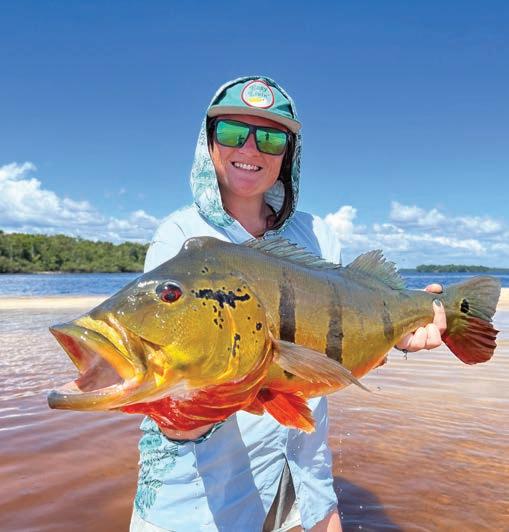



After a long day of fishing, we headed back to the boat to be greeted with a cold refreshing drink. I had two favorites, the traditional drink of Brazil - the Caipirinha, and the Pineapple Sunset.


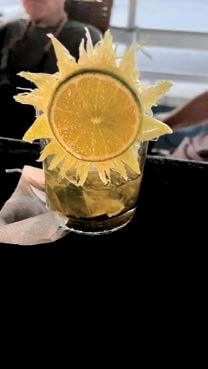
A refreshing shower and short break in our room later, we’d all meet for refreshments and appetizers on the top deck, anxious to see what delicious dinner the crew had prepared for us.
Lawren and I were boat partners as well as roommates, and between us we landed 116 fish of various species that ranged from two- to twenty-three pounds during six days on the water. I have included some catch-photos; I think the quality of the fish was amazing. It was a great trip with good friends and awesome fishing, all caught and released.
We ended the trip with a sunset dinner served on a white Amazon sandbar.
Cheers to Brazil for my personal best Speckled Peacock Bass: 85½ cm - 33.66 inches, that weighed a hefty 23-pounds!
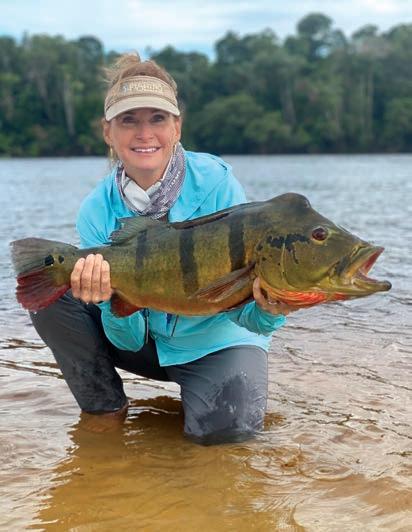
This trip is definitely a “Bucket List Trip”!
For Information on booking a trip call Falcon 918-251-0020 or email them at info@falconrods.com

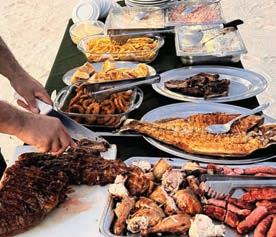
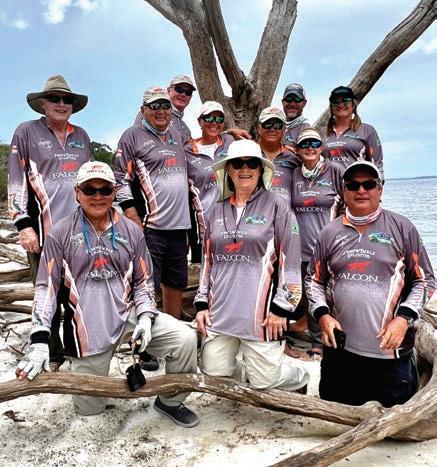










Today’s boats tend to be bigger and more dependably powered, which is a good thing, but they may also provide a false sense of security. Take anchors for example; I sometimes wonder how many boats even carry them these days, relying instead on modern engines, multiple engines or in the bays, hydraulic anchor poles. Bad things can happen to a boat or crew without a proper anchor, chain and rope. From my earliest years of boating, I have a few cautionary tales and thought I’d relate them here. It might save others from similar experiences.
In the ninth grade, I was running our 12-foot jonboat from Pleasure Island Marina up Sabine Lake, to Rainbow Bridge Marina. A blue sky norther was blowing, but the shoreline was calm enough for our boat. It was cold, so we pulled ashore and made a crackling campfire with boat gas and ample driftwood. Finally warmed up, we jumped back in the boat and took off, forgetting the boat’s smallish 3-gallon gas tank back on the beach. Whoops! The motor quit about 80 yards from land and we had no anchor. The wind was 20+ knots, blowing us farther out into Sabine Lake. The nearest landfall downwind was Louisiana’s cruel and empty marsh over the horizon, no doubt with a whitecap shoreline. My buddy lay flat in the boat while I paddled with considerable enthusiasm from the bow, straight into that wind, and we soon retrieved that gas tank. Lesson #1: A decent anchor will keep you from sailing off to an unknown fate.

This kayaker apparently has no anchor, but relies on what appears to be a golf club handle poked in the bottom.
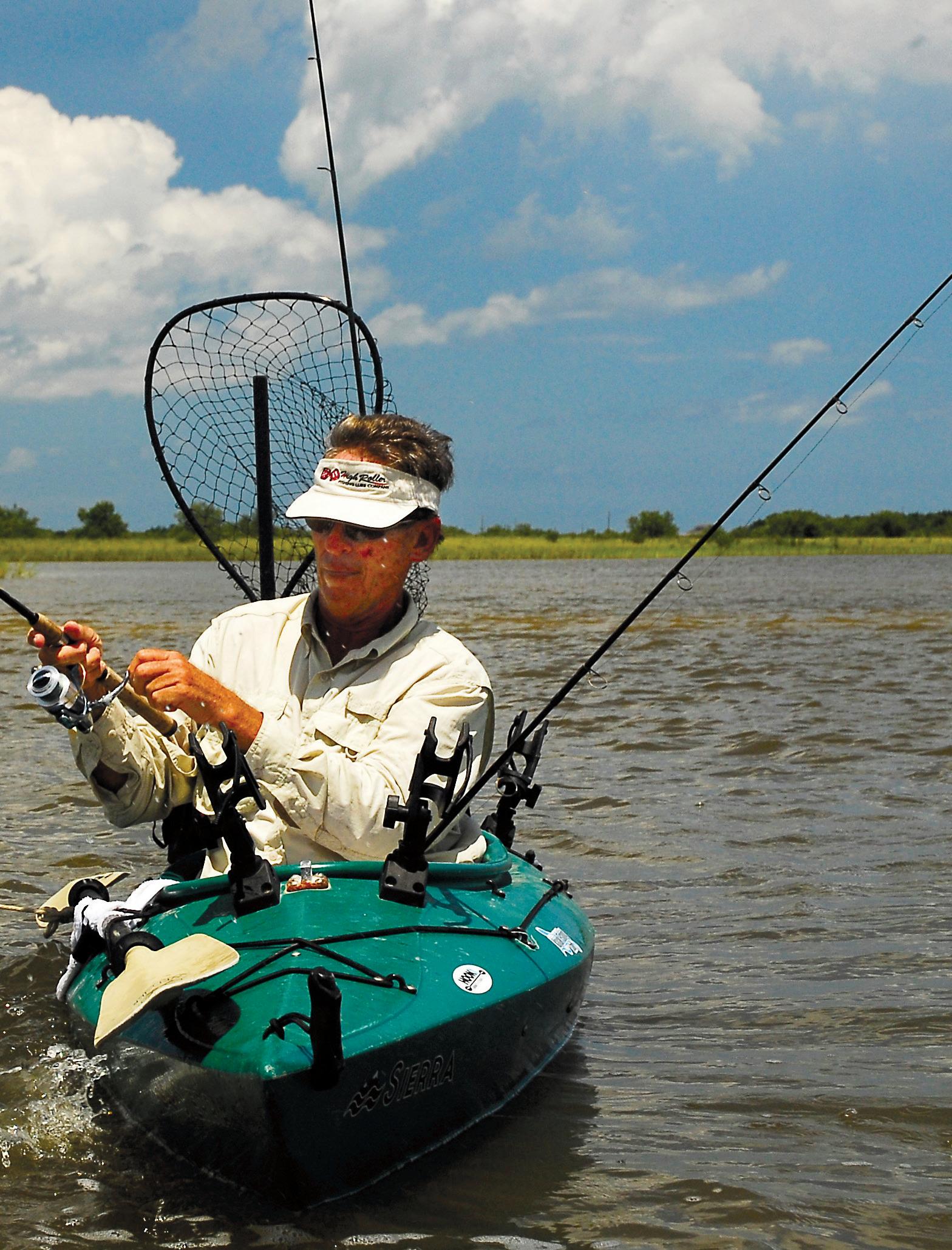
A few years came and went and by now I had a stick-steering bass boat, used to chase trout under the birds on Sabine Lake. One July evening I stopped for one more cast at a school of trout, and then the motor wouldn’t start. Drifting along in a southeast wind, I realized the anchor was gone, recently lost at the jetties. I still had a paddle, and roughly downwind from us was a single telephone pole a half mile off Blue Buck Point.
We had one chance to grab that big pole and tie off. If we missed it, a mile downwind was whitewater marking several miles of solid rocks of the South Levy. Safely tied to the pole, we contemplated swimming down-tide in the dark to the causeway bridge, but thought better of it. It was a long night sleeping fitfully on that fiberglass deck with life jackets for pillows. At dawn we were towed back by a crab trapper. Lesson #2: Replace a lost anchor ASAP.
Two years later (January again), again with no anchor, we used a 30-pound rock in glassy-calm surf a few miles west of Sabine’s jetties, before wading ashore and duck hunting a nearby pond, where there was brisk action. What could go wrong? We found out when a south wind picked up, along with the surf, and our “anchor” disappeared. The boat was carried halfway onto the beach, bow first, with the stern flooded by waves bashing over the motor. Without a bucket, we had no hope of bailing it out and pushing a heavy fiberglass boat into deeper water so we could start the motor. So, we carried everything loose up on the beach, decoys too, and hiked three miles northwest, a stretch of marsh we knew well, guided by a patch of oak trees on Highway 87. The first mile in deep marsh, in rain and drizzle as it grew dark. There was fortunately no fog, because we didn’t carry a compass.
After recuperating the next day, we returned with a friend’s boat
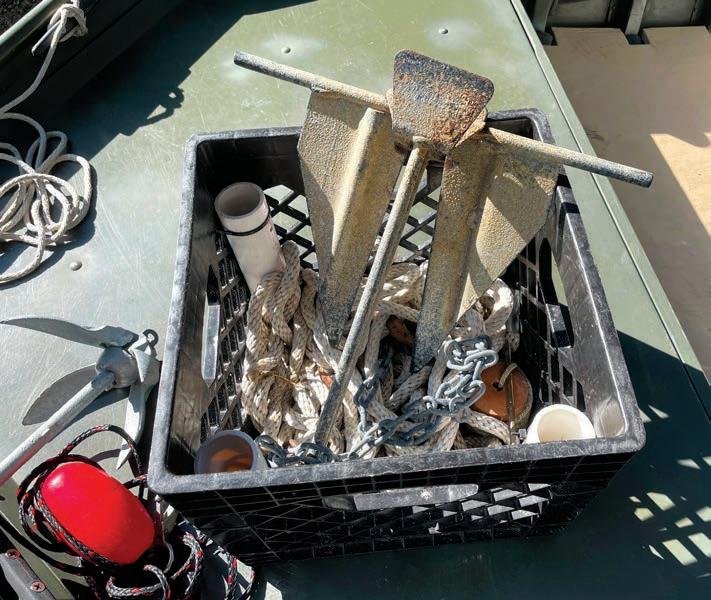
for towing service, only to find my boat gone and decoys too...The following summer, we ran into a high school chum who was a park ranger at Sea Rim Park, a few miles west. After telling him our sad story, he cheered us up by recollecting that the owner of a nearby farmhouse had found a bass boat on the beach the previous winter. We drove straight to the farmhouse, nobody home, and peered into the backyard barn, where sat my shiny bass boat. The sheriff soon had a chat with the gentleman to inform him that the boat was registered in my name. It seems the local offshore helicopter service had spotted my boat and landed, kept the decoys, and advised a friend to salvage the boat. Which he did, even cleaning the motor.
Two months later in August, we were on our way to Key West with that boat, where we had many adventures during the 1970s, back when the town was cheap and no cruise ships.
However, we had motor and anchor trouble that same summer in Key West. The motor ran fine each morning but needed several hours rest, before moving to the next spot. Which didn’t stop us from heading out each day, along with a shiny new anchor and rope. Then one evening, with a full moon rising, close to Boca Grande Island 15 miles west of Key West, the anchor came untied. An incoming tide had us drifting northwest towards Louisiana—about 500 miles away. I grabbed a mask and dove overboard in ten feet of water, but in that underwater twilight couldn’t find the anchor and soon had to pursue my boat, where first mate Jay sat helpless. (If I’d found the anchor, not sure what I would have done with it.)
Fortunately, there was one other boat in sight and only a hundred yards away; a houseboat with
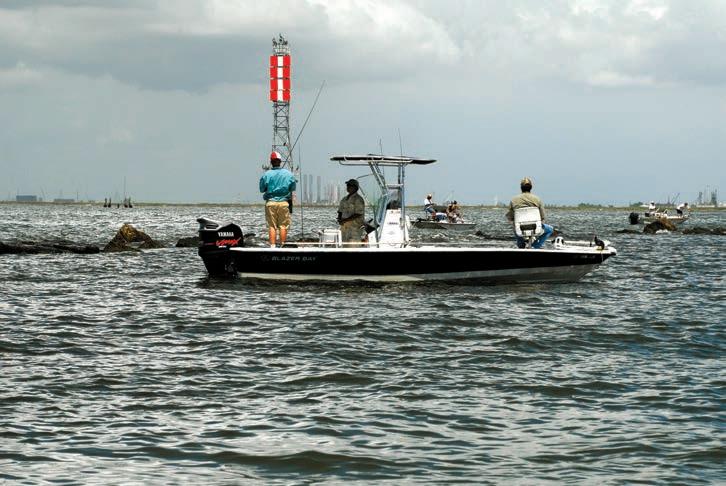 Fishing Sabine’s slowly vanishing jetty while on anchor. Many have been lost to those granite boulders below.
Fishing Sabine’s slowly vanishing jetty while on anchor. Many have been lost to those granite boulders below.



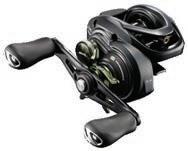



four Cubans cooking oxtail soup. It was glassy calm and we yelled until they took notice, and one guy came over in a tiny skiff and towed us to the houseboat, where we spent the night on their roof. In our cooler was a trophy 12-pound mutton snapper, caught with a gold spoon nearby in shallow water, the best fish I ever caught out there. It was cleaned and served up for supper. It was a good trade-off; we were saved from drifting away and enjoyed a baked snapper feast. I avoided the oxtail soup but Jay did not. The next day he was miserable and confined to our motel room.
All of these misadventures happened because we 1) we didn’t have a decent anchor and/or 2) we didn’t have a chain and shackle tied with a proper knot.
For 10 years after, I overcompensated by collecting anchors. We’d wait until summer’s green water washed the Galveston jetties. Ease in there with a jonboat close to the rocks on the north side, and snorkel around. If underwater visibility was even four feet, that was good enough. There were lots of anchors, mostly sharp-pointed Danforths, some old and others still with a price tag. It’s hard to imagine how many anchors have been lost there in the past century, hidden away in murky water most of each year. I’d keep about eight anchors and leave the rest on a rock for anyone who wanted them.
Later when we lived in Port O’Connor, in late summer 1994, seriously blue water arrived inside the Matagorda jetties and it was amazing to see 60 or more feet of bottom out there. There was a scattering of anchors off the end of the north jetty, it’s shallow out there with scattered rocks and sand, and that is where I found a new Fortress anchor made of aluminum. We kept a dozen anchors that day and then watched a school of slot-sized redfish that must have stretched for 30 yards. They were leaving the surf, rounding the jetty and headed for the bay.
That Fortress became my lucky anchor, lasting through years of jetty guiding. It was strong but so light I could jangle it out of the rocks
every time. It was easy on the lower back, too. Yet, it could anchor a 25-foot Mako in strong current. It lasted a dozen years and was sold along with that boat.
My point is that all boats should carry an anchor, chain and rope that will grab bottom and hang on; you don’t want an anchor that, because of wind and current, will drag right through a hot bite of fish. Drifting out to sea isn’t fun, either. Twice, I’ve fished with guys from up north who were used to lake fishing, who assumed a mushroom anchor would be fine on the Gulf coast. I told them, “You want to visit Mexico? Keep using that mushroom anchor.”
Carry a spare anchor, even a second-hand Danforth bought on Craig’s List. It might save a trip, if you snag and lose your primary anchor.
Hydraulic stern poles have grown quite popular since the first model came out more than 20 years ago, with more than 1,500 dealers now selling the leading brand. But it may also mean that there are a lot of bay boats out there without old-fashioned anchors. Hydraulic poles work strictly a boat’s stern, a sketchy position in my view, if a sudden storm comes up on the bay or the surf turns rough. Especially if the device jams and won’t raise, which I experienced firsthand in a storm in 2008. They work down to depths of 10 feet, which doesn’t help in some areas. They’re great for run-and-gun tournament fishing the marsh, or guiding, or working acres of shallow flats. I even see guys using them at the dock, so they won’t have to tie up.
With wade fishing, I would certainly set an anchor and chain before wading off from the boat. Especially on the windy Texas coast, where a heavy, high-profile boat catches the wind and really pulls hard on whatever is holding it there.

I may have been a slow learner with anchors and had more than enough adventures, where I now don’t leave the boat ramp without a proper setup. I now carry a Stockless anchor with three feet of rust-proof chain for my 16-foot skiff, along with a smaller, grapple anchor that folds up for storage and can be deployed to keep the boat broadside to the fish (anchored bow and stern in protected water) even in a moderate wind. It can also be slung onto a grassy shoreline, or used to slow or even stop the boat while drift fishing in light wind.
Joe Richard has fished the Gulf since 1967, starting out of Port Arthur, but his adventures have taken him up and down the entire coast. He was the editor of Tide magazine for eight years, and later Florida Sportsman’s book and assistant magazine editor. He began guiding out of Port O’Connor in 1994. His specialty is big kingfish, and his latest book is The Kingfish Bible, New Revelations. Available at Seafavorites.com


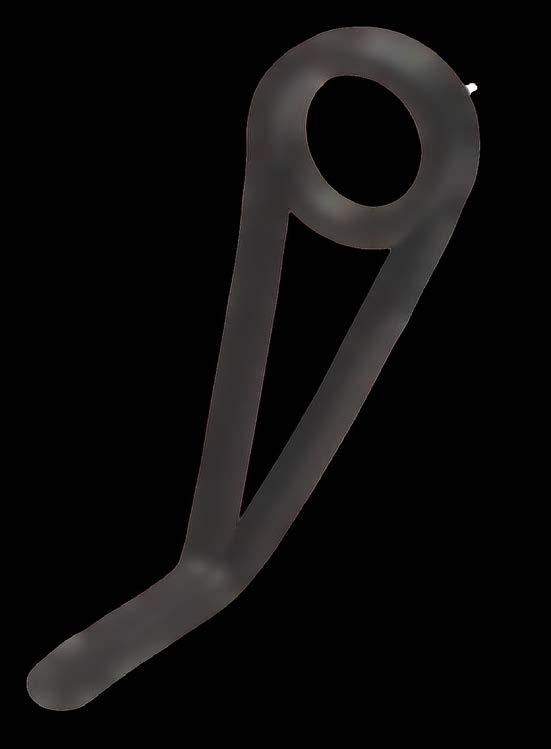


Ash is wearing the Solstrale PRO Hoodie, Sidereal pant, and Bootlegger Rolltop Backpack 30L


Solstrale, meaning “ray of sun light” in Swedish, stems back to our roots and our commitment to protecting anglers from the harsh conditions they experience. The sun is no exception. The Solstrale Pro was built for anglers who want to avoid being fried after a long day on the water.


Winter months are always my favorite times to write for the magazine. Winter trout fishing just gets me going and every year for about two months I feel like I am 20 years old again. Now, I don’t feel 20 at the end of a cold and long fishing day but I sleep well and typically feel great when I start to wake around 5:30 each morning. I am that person that has the boat and all tackle pretty much ready to rock in the morning, so I don’t normally have to rise too early in order to be ready to go. I find that being well prepared for each day allows me to rest better at night and prevents me forgetting something critical for the day that a rushed early morning can create. Anal, I know, but it has worked for me in my career and in my life. All this said, let’s get into what I think has enabled me to be able to continue to build a knowledge and skill level to find and catch trophy class fish.
There is no substitute for time on the water, but it is not just time that aids in your development as a better angler. It seems like a waste to me when I see anglers overlooking many factors that are encountered during the average day on the water. Obvious factors are tidal levels and movement, moon phases and how they relate

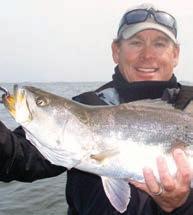
to tides, solunar table, wind direction and velocity and, of course, water temperature. These factors alone are a lot for many young anglers to take in. I am old school and have dock and shoreline references that tell me tide levels, flags around town that indicate wind direction, weather apps that provide wind velocity, air temperatures, and major as well as minor feeding periods for the bay system I am fishing. My GPS measures water temperature as well as navigation. I preach to my clients that they need to let the conditions of the day dictate where and how they will fish. I also advise that they be in tune with the changes during the day in the weather pattern so that they can adjust to these changes. It is beginning to sound like there is more to the fishing game that one might think. Well, there is and like I have said many times, if one is good at something they will work even harder to become better at it. Anything worth our time doing is worth trying to do well.
With basics covered now we must work on what to do with the area that many of the basic ingredients to finding fish have led us to. Structure in the area is as important as bait because the bait needs structure the same as game fish. Without any form of bottom structure the possibility of bait holding in the area is unlikely. It is true that bait fish migrate from one area to others and also true that game fish travel at times with the food source. What it boils down to is that structure combined with the presence of bait wins at the end of the day.
With many things in place, I now want and need my guys to listen to my communications with them and encourage them to communicate with me and one another as well. Thinking aloud was just something I did to help myself stay in the game in the early years. Little did I realize that these verbalizations would become the foundation for many of my teachings on the water each day. I was coaching but did not realize it. Over the years I noticed that many of my clients, especially those determined to become higher-skilled anglers, were beginning an exchange of information with me and one another during our times on the water. My want has always been that of becoming the most complete angler that I can become. I learn by watching and listening to anglers I respect, based solely on skills that I have seen from them in the field. I know there are many other highly-skilled anglers out there that I have not had the good

fortune to fish with and I look forward to doing that if possible. This past week was the basis for this article because all of what I have presented so far were the ingredients for our days on the water.
My guys were terrific and are longtime clients. Throughout each day, wade by wade our group was in constant conversation about what we were observing. With every departure from boat to water, lure selection was discussed. Most of the time we all tried to throw something slightly different, searching for that lure that the trout wanted most. It is a given that each lure selection comes with its own set of requires as far a presentation. These guys are well equipped in that department so very little coaching was needed but there was a little on a few occasions. Communicating our findings throughout the wades allowed us to the fish the area for that time frame. All were aware of the times of the day, when we expected the feed to increase as well as the periods when we felt the feeding activity would be at the lowest. Lures and presentations were adjusted for each situation. This sounds like a lot, and it is, but all of it is critical every minute of every day. Throughout the day we were able to relay information to one another about where and how the bite was occurring. At one point one of the guys noticed that his bites were not occurring in white sandy potholes but in areas of short grassy bottomed potholes. It was an observation that changed the course of that wade and led to some very nice fish being caught. With this knowledge, all were able to focus on these types of areas that resulted in higher production for a few hours.
My thoughts are that the trout, due mainly to generally improved water clarity across the area as our wade progressed, had begun to use depths similar to the bright-bottomed potholes, but spreading across a bottom structure of short grass that would still provide cover while allowing the opportunity to eat if that opportunity presented itself. Trout are predators and predators are opportunistic by nature, and seldom pass up an easy meal. I see this in Rockport as well and it is a pattern we go to when fishing over large heavy grass flats and many of our back lake areas.
During periods of the day when feeding intensity was high, we noticed that the trout want to feed higher in the water column and switched to Floating Custom Corkys and Texas Custom’s Double Ds. Someone always had a surface related lure in the spread even though we did not actually throw a true topwater. We wanted a lure that created some surface disturbance but wanted to be able to work slightly deeper columns of water at the same time. I am huge on multipurpose lures that allow me to cover different water depths at

different speeds all in one. By communicating our findings throughout each wade of the day, all in the group experienced a higher rate of success. We would even discuss the day’s findings at night and make tentative game plans for the next day’s fishing. Sounds like we were doing some sort of homework at days end, right? I have said many times during a fishing day to my clients that are not listening, “You do know there is going to be a test at the end of the day.”
I love groups like this. Groups that show up with an open mind and a willingness to learn. When you make the day about learning, and you are open to learning, I think you’ll find yourself having more success and way more fun. Learning is best achieved when I can create a comfortable environment for the anglers. I like groups that show up with aggressive attitudes that aid in stirring competitive juices within the group. Competition is healthy and often creates energy that allows me to keep a group of anglers in an area long enough to experience the best the area has to offer. I often split my groups into teams and have little tournaments amongst the group. Trash talking is permitted and encouraged, but we keep it clean; well; most of the time anyway. If you are not a communicator on the water, try it the next time you are out with your fishing buddies. I think you will see that it will help improve everyone’s odds of catching fish and I guarantee that you will become aware of some small things that you might be overlooking. The upshot is that you can honestly come away with a better knowledge of the why, where, when, and how for that day.
May your fishing always be catching! -Guide, Jay Watkins

Telephone 361-729-9596
Email Jay@jaywatkins.com
Website www.jaywatkins.com


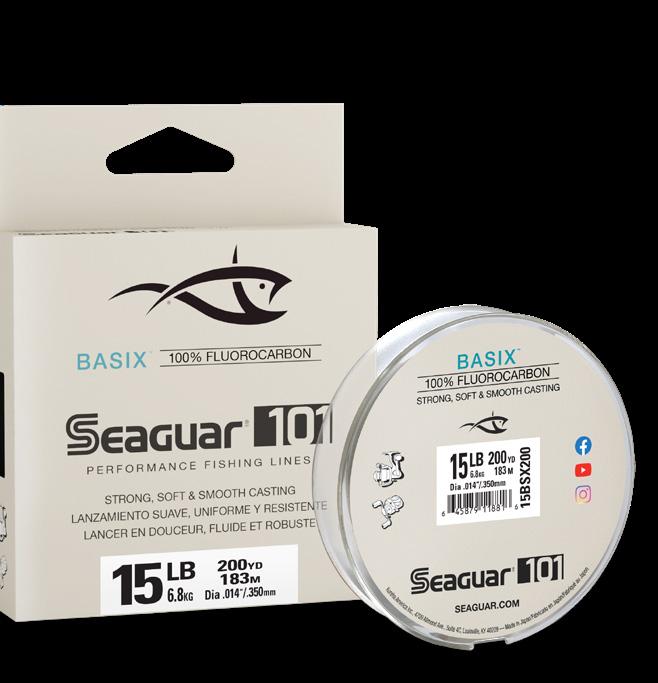
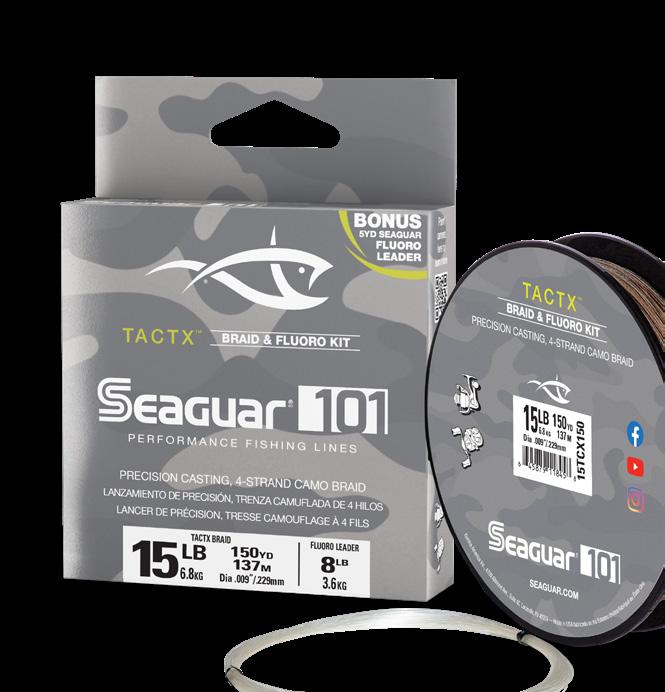

Since December 2020, Texas Parks & Wildlife Department (TPWD) and Texas A&M University at Galveston have been engaged in an acoustic tagging project to record fish residency within multiple estuarine and nearshore habitat types and monitor movement among estuaries along the Gulf of Mexico. The Sabine Lake System Acoustic Array (SLSAA) is part of the Integrated Tracking of Aquatic Animals in the Gulf of Mexico (iTAG), a network of more than 60 bay-scale and nearshore acoustic receiver arrays placed across much of the U.S. Gulf of Mexico coast. The SLSAA now consists of 31 receivers strategically placed throughout the Sabine Lake Estuary and nearshore Gulf. The arrangement of receivers is designed to monitor fish movements and residency within and between a variety of estuarine habitats, such as the Salt Bayou Marsh to the west of Sabine Lake, the Sabine Lake Oyster Reef, the Sabine and Neches Rivers, the Intracoastal Waterway, and multiple bayou distributaries connecting Sabine Lake to the Sabine National Wildlife Refuge to the east; receivers also monitor fish movement between Sabine Lake and

the Gulf through Sabine Pass (Image 1). This study will provide valuable information that will shed light on the behavior of different fish species contributing to a better understanding of estuarine ecosystems by anglers and management agencies.
Fish tagging began in the fall of 2021, with a focus on Southern Flounder. In the fall, adult Southern Flounder migrate from the bays to Gulf to spawn. Of the total number of flounder tagged from September to early November 2021, those that were observed migrating to the Gulf of Mexico did so between November 12th and December 13th. They began aggregating in tidal passes and moving into the Gulf when the ambient water temperature decreased below 68°F (Image 2). This behavior is consistent with studies that have suggested that in order to survive and quickly develop into healthy juvenile flounder, larvae require a water temperature between 59 to 73°F, but do best in water with a temperature range between 62 to 65°F. Additionally, if water temperature is towards the high end of that range (>65°F), then a greater proportion of the juvenile
flounder will become male fish. This is because flounder produce larvae that are genetically approximately 50% female and 50% male. However, if exposed to environmental stressors, such as warm water, then some of those genetically female fish will develop into males. Ultimately, this results in a disproportionate abundance of adult male (sperm) to female (eggs) gametes produced during future spawning events.
The preliminary data from 2021 and future data collected from tagged fish will continue to provide insight into the life history of Southern Flounder and other recreationally important species, helping to inform management decisions.
For example, the closure of the southern flounder fishery in Texas waters between November 1st and December 15th was enacted in 2021 to protect fish undergoing their spawning migration. Providing protection from fishing pressure during the “spawning run” allows for protection of the spawning stock and increases the opportunity for more juveniles to enter estuaries and ultimately recruit into the fishery. Movement patterns in 2021 supported this management decision because they show that all tagged flounder that were observed migrating to the Gulf did so while the closure was in place (Image 2). Many tagged fish pinged multiple receivers as they moved through the system. Image 3 shows the inferred path of a southern flounder that was tagged on September 24th, 2021 in Salt Bayou. It appears to have stayed in Salt Bayou until late November when it staged near Keith Lake Fish pass from November 15th to 26th, before migrating through Sabine Pass on Nov 28th and 29th. We have also observed a number of individual flounder returning to Sabine Pass from the Gulf following spawning. Further investigation into the timing of fish movements such as these will allow for a more robust understanding of the migration and residency patterns of Southern Flounder.

During year two of the SLSAA project, the number of different species tagged was expanded to include Spotted Seatrout, Black Drum, Red Drum, Bull Shark and Alligator Gar. The project was able to leverage both TPWD routine sampling and enthusiastic local anglers to tag several individuals of each of these species. Other interesting preliminary
results gathered from SLSAA tagging data thus far include Bull Shark and Black Drum entering Sabine Lake that were tagged in Galveston Bay; Spotted Seatrout tending to return to previously visited spots within a narrow range of movement; and slow methodical movements of Alligator Gar along the entire length of Sabine Lake from Sabine Pass to the Sabine River.
In year three, TPWD will be expanding this study to include another acoustic array in the Cedar Lakes region and will concentrate on tagging Alligator Gar in both the Cedar Lakes and Sabine Lake areas. Following Hurricane Harvey, populations of Alligator Gar along coastal Texas increased dramatically, providing a good opportunity to tag a large number of fish and record their movements to see if individuals are resident in their estuary or if inter-estuarine exchange occurs. Expansion of the arrays and coordination between TPWD and other research agencies and institutions is possible because the same types of receivers and tags are used by all of the iTAG acoustic arrays throughout the Gulf of Mexico. Since the battery life of tags ranges between 1 to 3 years depending on the size of the fish (larger fish can accommodate larger tags with longer battery life), we anticipate gathering data and information for many years from tagged individuals, which will be really cool. Stay tuned.

When it comes to our weather patterns in Texas, there are a few things that we know for sure. One of them being is that summer is going to be blistering hot and the other is that winter is going to be bone-chilling cold. The other two seasons provide much fishingfriendlier weather but the bad thing is, those days are numbered and never last long. March happens to be one of those months where there are still cold days coming but the end of winter is in sight.
As the days continue to get warmer, so does the length of daylight hours. Longer days create more sunlight which allows for more outdoor activities to be had. It seems that this month is the kickoff for most anglers. By this point, hunting season is finally over with and it is also a perfect time to get back out on the water; especially if you are not a fan of the colder months.
It seems that this is the time when other fishing related events begin to pop up on the calendar as well. The Houston Fishing Show is at the beginning of the month, March 1 through 5, and if you have never been, it is worth going to spend a day. There are plenty of vendors that comprise pretty much every product that
can be found on the Texas coast. You can find rods, reels, lures, kayaks and anything else that you can think of.
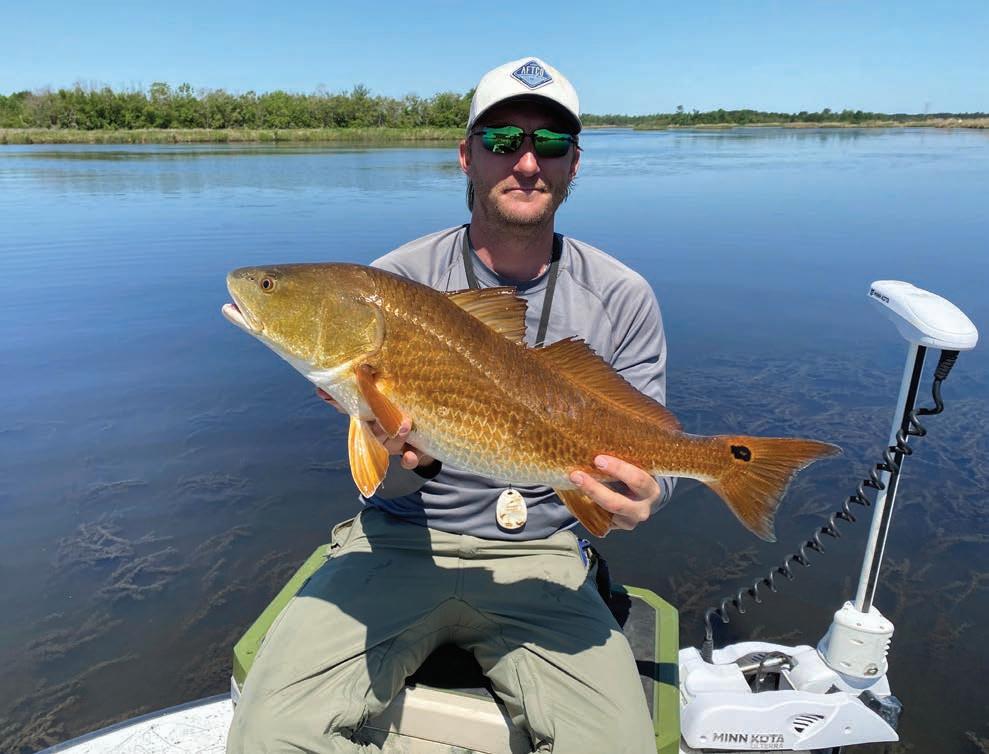
I know that I always make a point to head over to the Fishing Tackle Unlimited booth, Sightcast Flies booth, and always Chickenboy Lures. I will be at the JH Custom Rods booth Saturday and Sunday and if you need a rod or just want to say hello, please come see us.
As far as fishing goes, it too begins to kick off with the return of shrimp, shad, crabs and gamefish that migrated out to the Gulf and have begun returning to the bays. With every passing day the water gradually becomes warmer and more signs of life start to appear. Along with that, this is usually the time that we start to see grass growing in the backwater ponds; just in time to create refuge for the host of returning forage species. Mother Nature sure knows how to work in harmony with all of her creatures.
This particular time of the year is when I will spend a little time doing something different, and that is targeting flounder. It is no secret that they move out to the gulf to spawn during fall months and this makes catching them an easy task along the channels and
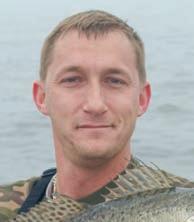 DAVE ROBERTS SHALLOW WATER FISHING
DAVE ROBERTS SHALLOW WATER FISHING
passes at times. However, it is hardly ever mentioned about fishing for them during their return in spring. This is really my preferred time to target them because fishing pressure is low and they were able to spawn to ensure a future crop. As for methods I prefer to catch them, I generally like to hang around main passes that lead from the main bays to the Gulf. These are the areas they will first begin to stage once coming back inshore.
When it comes to trout, there is a good chance that a dedicated angler can catch their personal best weight-wise in March. There are some really nice trout still in their winter patterns but are beginning to eat a little more often with the rising temperatures. A big Super Spook on a sunny day makes for a really tempting meal to a hungry fish. As far as the schoolie-sized trout, they too are beginning to feed more predictably, following the shrimp and smaller baitfish. Also following the same food source are the gulls and they can be a dead giveaway of where fish might be. When you can get on a few of these schools and stay with them, it makes for a memorable day of fishing.
In life I have come to learn that there rarely is a time when everything is just perfect and there always seems to be an exception; fishing is no different. During this time of year, fishing can be great
in general but with the exception of being perhaps the toughest season for targeting redfish. I spend a vast majority of my time trying to catch these viscous little critters and month of March is the most difficult for me. It’s not for the lack of them being in marsh – it’s their diet. They’re completely focused on gorging themselves with small shad and they are 100% focused on this. The problem is finding a lure that mimics tiny shad and that can also withstand the beating an upper-slot redfish puts on it. What I’ve found that works best is tying a tandem rig with 1/16 oz jigheads and putting smaller white perch plastics such as Fin-S-Shad or the baby Zoom flukes. Or if you are a fly fisherman, a spoon fly works great. You can catch them on your normal redfish arsenal but it becomes fairly difficult this time of year and you will get plenty of refusals.


Regardless of what you like to target, there are plenty of opportunities coming up in the next month. The bright side about this time of year is that it is only going to get better from here. Right now is a perfect time to get out and enjoy our Texas resources. When you do, please practice good boating safety, wear a life jacket and as always, have fun and enjoy life.
First Trip of the Year Tips
Email: TexasKayakChronicles@yahoo.com
Website: www.TexasKayakChronicles.com
 Dave Roberts is an avid kayak-fishing enthusiast fishing primarily the inshore Upper Coast region with occasional adventures to surf and nearshore Gulf of Mexico.
View The Video Open Camera and hover over QR Code. When link appears at top of screen tap to open in YouTube.
Dave Roberts is an avid kayak-fishing enthusiast fishing primarily the inshore Upper Coast region with occasional adventures to surf and nearshore Gulf of Mexico.
View The Video Open Camera and hover over QR Code. When link appears at top of screen tap to open in YouTube.
2023 is off to a running start. CCA Texas Assistant Directors kicked the year off quickly meeting with local volunteer chapter boards across the state getting ready for 2023 banquets. By the time this issue hits the newsstands, CCA Texas will have already had banquets at the Trinity Valley (Dayton), Texas State (San Marcos), San Bernard (East Bernard), and Saltgrass (Winnie) chapters. 2022 banquets saw success across the state and the energy from local volunteers and communities is as strong as ever. 2023 looks to be a promising year and the staff and leadership at CCA Texas are looking forward to another exciting year.
Local chapters and their fundraising banquets are crucial to the work of CCA Texas. As we have often said, these local volunteers and communities are the backbone and fuel of the organization. Over time, CCA Texas has been fortunate to have several companies step in with statewide support of the organization as well. Statewide sponsors for CCA Texas in 2023 include: Academy Sports + Outdoors; Busch Light- Anheuser Busch; Frio Ice Chests; Frogg Toggs; John Deere; Marucci Sunglasses; Rhineland Cutlery; Tincup Whiskey; and Tito’s Handmade Vodka. These sponsors all play a part in each individual chapter banquet and CCA Texas is fortunate to have them all as part of the organization’s fundraising efforts. Local chapters welcome community support and volunteers. If you would like to volunteer, be sure
to reach out to CCA Texas at (713) 626-4222 and you will be connected to the Assistant Director for your area. Be sure to also mark your calendars for upcoming events in March: Sabine Neches (Port Arthur) March 2nd; Brazos Valley(Bryan) March 3rd; Corpus Christi March 9th; Greater Sugar Land (Sugar Land) March 9th; Helotes March 23rd; and Colorado Valley (La Grange) March 30th
CCA Texas’s Advocacy Team has been busy since the turn of the calendar into 2023. The Advocacy Team is focused on the current legislative session and is monitoring all legislative bills being introduced that may have an impact on fisheries management and any day-to-day operations of the organization.
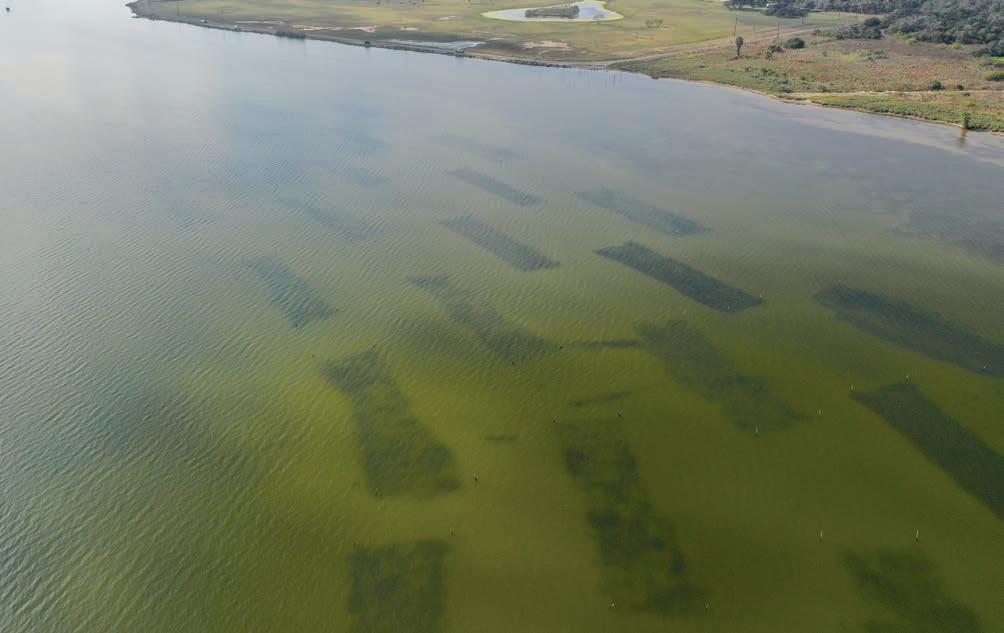
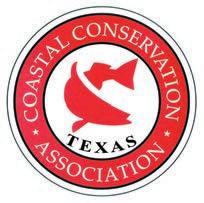
The Texas Parks and Wildlife Department (TPWD) Commission met in late January, and three items were brought to the commission for consideration to move forward to public hearing. These management items included the following:
• Shortfin Mako Shark – match federal regulations prohibiting retention of shortfin mako sharks. Effective July 5, 2022, the National Oceanic and Atmospheric Administration (NOAA) National Marine Fisheries Service (NMFS) enacted a final rule prohibiting the landing or retention of shortfin mako sharks in any U.S. Atlantic highly migratory species (HMS) fishery until
further notice. Coastal Fisheries Division proposes to add shortfin mako to the list of prohibited shark species for both the recreational and commercial fishing proclamations.
• Cobia – match federal regulations of a one fish per person, per day bag limit and a vessel limit of two fish per trip, not to exceed the per person bag limit, for the recreational and commercial fisheries. This change is proposed to address declining stocks of cobia in the Gulf of Mexico and to facilitate ease of enforcement with federal regulations.
• Direct Enhancement of Snapper Conservation and the Economy through Novel Devices Act of 2020 (DESCEND Act) in state waters – mirror the DESCEND Act requirements, which apply to Gulf of Mexico federal waters, in state waters, but require anglers to use the devices when a fish exhibits signs of barotrauma. The DESCEND Act applies to commercial vessels, charter vessels and headboats, as well as private recreational vessels fishing for reef fish such as red snapper. The DESCEND Act requires fishermen to have a venting tool or descending device rigged and ready to use when fishing for reef fish. This amendment would require anglers to utilize a venting tool or descending device in state waters when fish exhibit signs of barotrauma. This change will ease enforcement through consistency with federal regulations and reduce discard mortality of reef fish in state waters.

The TPWD Commission did vote to publish these changes and they will be put forward for public comment in the near future. Be sure to watch for TPWD announcements for public hearings and opportunities to comment.
Habitat
CCA Texas’s habitat committee, Habitat Today for Fish Tomorrow (HTFT), has been active as well. With strong interest and support from Tito’s Handmade Vodka, CCA Texas has approved funding of $226,250 to create five more reef beds located off the Goose Island State Park Big Tree Unit. This reefing site currently has thirty-nine reef beds, and these final five will complete the permitted area. Tito’s Handmade Vodka has contributed $50,000 to the total cost that will put the final touch on this multiphase project lead by Dr. Jennifer Pollack and her staff at Harte Research Institute (HRI). A late spring deployment of materials is planned at this time, pending the renewal of annual permits. The end result of this project is a living shoreline which offers shoreline erosion protection, habitat for many species, increased eco-system health, and an easily assessable fishing area for recreational fisherman by foot or boat. This project exemplifies the importance of partnerships between academics, conservation organizations, government agencies, and local industry and businesses.
CCA Texas encourages you to visit your local chapter, attend a banquet, be a part of the process that manages our fisheries and eco-systems, and above all enjoy Texas’s coastal resources and pass along the importance of a strong conservation-minded approach to others as they enjoy these resources. Be sure to visit CCA Texas at www.ccatexas.org, on Facebook at https://www.facebook.com/ CCATexas and Instagram at @cca_texas.

They’re out there, just under the surface. I know it.
I can hear the redfish calling from the flats. Further out, there’s a Marlin with my name on it. Tarpon await by the jetties. And here I am, a rod in hand and perfect weather overhead.
It’s going to be a good weekend indeed.

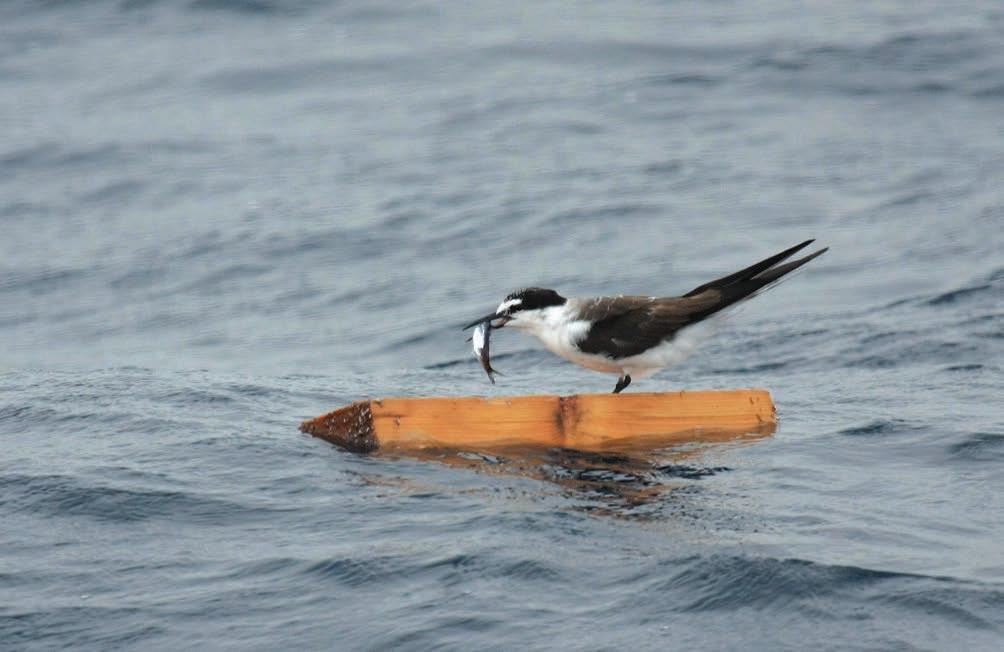
Bridled terns are medium-sized tropical terns, with long, slender wings and a deeply forked tail. They reach a little over a foot in length with a 2.5-foot wingspan. They are sooty brown or grey above and white below, with black on the crown and a white forehead and eyebrow. The bill is about as long as the head and is black in color, as are the legs and feet. Outside of the breeding season, the bridled tern is slightly paler, with its black crown streaked white and brown, and the dark feathers of the back having white tips, giving it a peppered appearance. Immature birds are broadly similar to the adults, but the back is grayer with pale feather edges, giving it a scaly pattern. Juveniles also have an all-dark face and breast with white only on the belly. In appearance, bridled terns are most similar to sooty terns, but they have very different strategies on how to survive in the nutrient poor waters of the tropics. The flight pattern is also more light and buoyant, and the bridled is a lighter and more delicate build. In the wild, bridled terns have a lifespan of around 12 to 18 years. The scientific name, Onychoprion anaethetus, is from Ancient Greek. The genus comes from onux meaning “claw” or “nail,” and prion, meaning “saw.” The species, anaethetus, means “senseless” or “stupid,” apparently a reference to the ease with which hungry sailors captured this relatively docile seabird.
Most populations are migratory and disperse at the end of the breeding season to overwinter at sea. Away from the breeding grounds, the species is entirely pelagic, perching occasionally on floating objects from sargassum to fishing boats. They are fairly common summer residents to pelagic Texas waters – found in warm tropical waters worldwide, and rarely seen on land during non-breeding seasons, except when blown off course. Bridled terns are generally silent at sea but can be noisy in breeding colonies and roosts. They have a variety of short harsh calls and also a yapping call reminiscent of a small dog.
As seabirds, small schooling fish are their main source of food, with some squid and crustaceans. They generally find their meals where seaweed and flotsam gather, such as current convergences. Sometimes, they concentrate where schools of predatory fish are chasing smaller fish to the surface. They hunt mostly by flying low, hovering, and dipping down to take items from the surface of water; they rarely plunge-dive into the water.
Bridled terns usually nest in noisy colonies, often associated with other tern species. They are seasonally monogamous. Courtship involves high flight by groups or pairs. Males fly slowly and low over the colony, carrying a stick or fish, pursued by other birds. On the
FISHY FACTSground, the pair bow, strut, and turn in circles, and the male offers fish to the female. Nest sites are on rocky islands or exposed reefs, with a periphery of rubble, bushes, or other shelter. The nest is a scrape or depression in shingle or sand with little or no lining, either freshly excavated or re-purposed from a previous season, concealed in a variety of locations, including natural cavities amongst rocks or coral rubble, vegetation, crevices or caves, under cliff ledges, etc. Though not strictly a colonial species, pairs usually congregate in suitable habitats with neighboring nests spaced according to nest site availability (usually 3-15 feet apart). The female lays only a single egg. Both parents incubate for about a month. Chicks leave the nest after a few days to hide in nearby cover. Both parents also feed the young, regurgitating small fish. The young fledge in about 2 months and are independent about a month later.

Bridled terns have been known to abandon breeding colonies when subject to severe human disturbance, although they can become habituated to human presence in sites exposed to continuous visitation, especially where human movements are predictable and reliable, and groups sizes are kept consistent. Additional measures to reduce human disturbance of nesting colonies include the erection of barriers and signs, provision of walkways, and supervision and education of visitors. Eggs are harvested for subsistence in the Bahamas and the West Indies; both eggs and chicks are harvested on some islands in the Pacific by local residents and coastal shipping crews. Neither of these are considered to represent a significant threat to the population. Though the population trend is unknown, it’s range is very large, and it is not believed to be decreasing sufficiently rapidly
for concern. The global population is estimated to number 610,0001,500,000 individuals, roughly equating to 400,000-1,000,000 mature individuals. For these reasons, the IUCN Red List lists the bridled tern as a species of Least Concern.

 View The Video Open Camera and hover over QR Code. When link appears at top of screen tap to open in YouTube.
View The Video Open Camera and hover over QR Code. When link appears at top of screen tap to open in YouTube.

The bountiful waters of the Texas coast support many species of fish. From the coastal marshes through the bays, to the jetties/nearshore waters and into the open Gulf, sources estimate at least 230 species of fish swim in the Lone Star State’s saltwater. The beachfront shallows, from Bryan Beach to Texas Point, serve as a transitional zone, where many species interact. Some begin life in shallow bay backwaters before heading to the Gulf to live out their adult lives; others leave the depths of the open ocean and venture close to the beaches during these migrations.
Some species inhabit the beachfront waters in abundance, throughout the year, while others temporarily run the beaches. Others occur infrequently, almost accidentally. I’ve caught and seen too many species of fish along the Texas Coast to keep count. Out of all those I catch, one regularly provides me with a unique thrill. Some might guess it’s a king mackerel or a snook, maybe a tarpon or cobia. But my most welcome surf-zone surprise is a flounder, especially one the size of a doormat.
In Texas, the southern flounder (Paralichthys lethostigma) is the largest and most common of over twenty species of

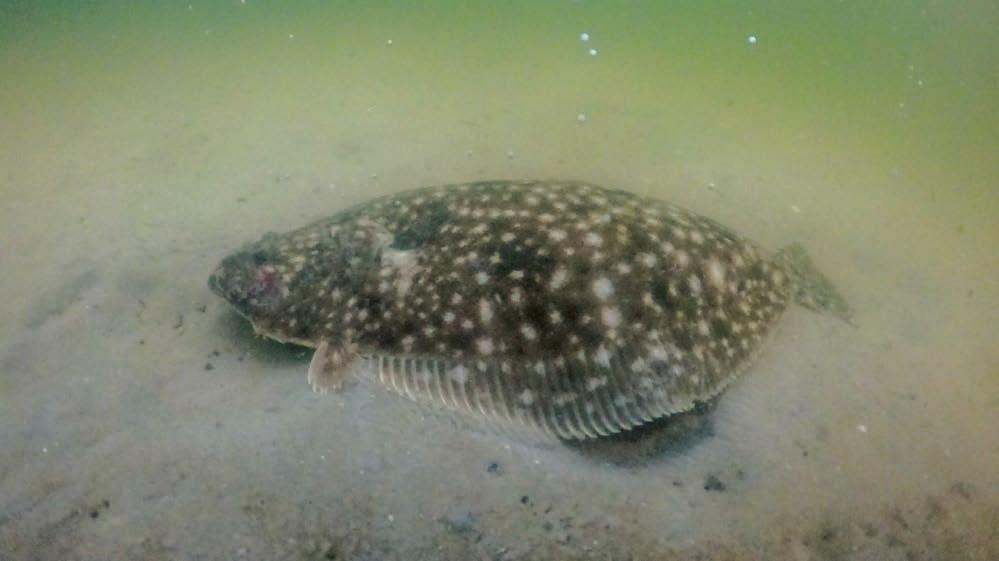 Not commonly seen in the surf; this is an underwater photo of a flounder swimming in the shallows of the surf zone.
Not commonly seen in the surf; this is an underwater photo of a flounder swimming in the shallows of the surf zone.


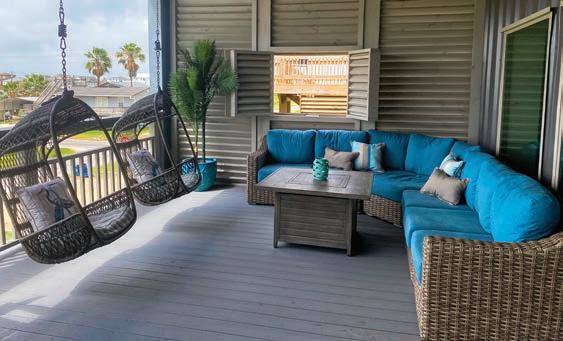

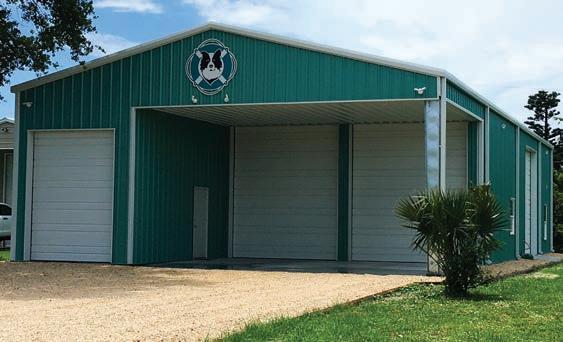

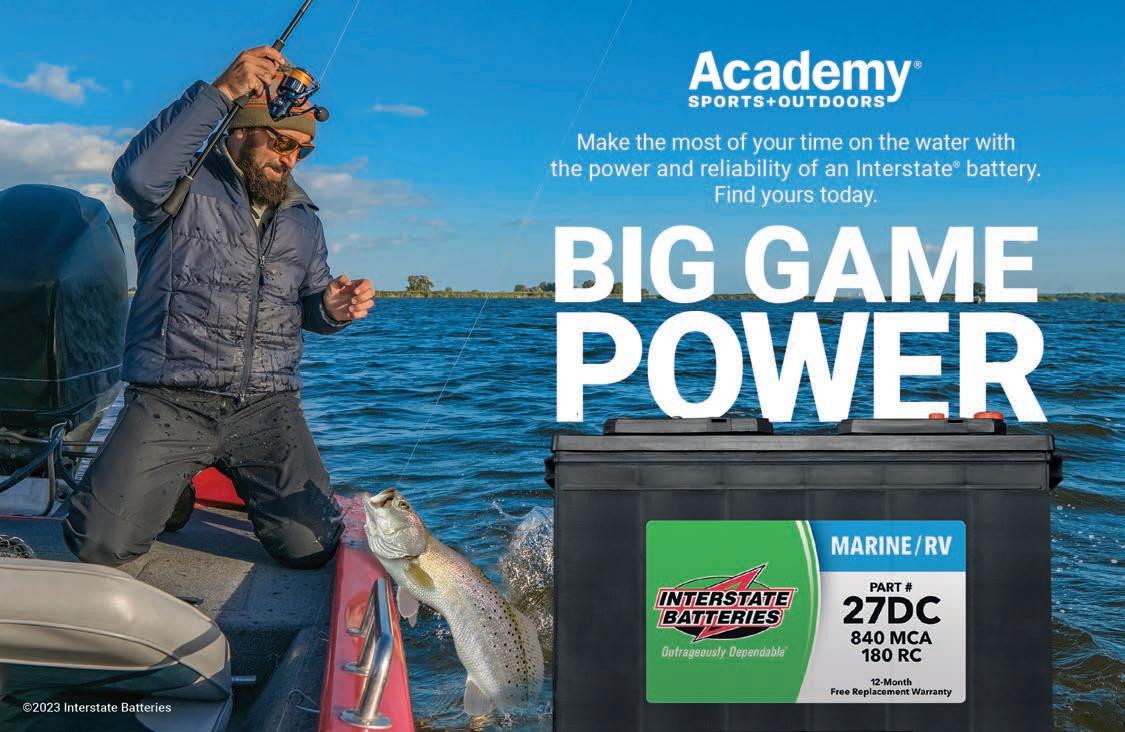
flatfish. Acknowledging their popularity on the menus of seafood restaurants throughout the country, state authorities continually tweak the regulations related to the harvest of flounder, applying the regulations to all species of flounder, and their hybrids.At certain times of year, both recreational and commercial anglers harvest flounder fairly easily. Whether sought on rod and reel or under the stars on a gigging mission, flounder are exciting to target.
For nearly twenty years, I pursued flounder at night with lights and gigs. I’ve logged many miles and hours dragging a kayak rigged with underwater lights through the bays, searching for tasty flounder. When I possessed a commercial fishing license and sold flounder and other fish to local markets, I was one of the few, if not only, angler using a kayak instead of a motorized boat to target flounder, but I did regularly gig my legal limit of thirty fish. Years of experience helped me learn patterns related to tides, water temperatures, salinity, moon cycles and weather, so I could become efficient at harvesting flatfish in our bays and marshes.
Back in my commercial fishing, gigging days, I handled flounder regularly, but these days, working as a guide in the surf, I catch them mostly by accident. We almost never see flounder sitting on the bottom in the surf, though we do occasionally step on one and feel our heart rates rise, fearing the barb of a stingray. Mostly, the water is too turbulent and murky to allow us to see them in the shallows along the beachfront. Every flounder I’ve caught in the surf has come as bycatch, while I was throwing lures for other species. Nearly all my surf flounder fell victim to soft plastics rigged on jigheads and bounced around on the bottom of the guts for trout or reds.
Catching flounder in the surf doesn’t happen often, though plenty of southern flounder do pass through the nearshore waters every year. During the fall, most mature flounder leave the bays and make their way to Gulf, where they spawn at depths ranging from fifty to one hundred feet. A relatively small number of adults remain in the bays throughout the winter months.While mature males rarely exceed twelve inches in length, females grow to much larger sizes. In spring, after making more of their kind, the flounder reenter the bays over a fairly long period of time, creating a less-concentrated spring “run.”
Sometimes, we intercept these mature flounder in the surf while they move in and out of the bays. Most of my surf flounder have been caught within about five miles of the nearest pass or channel connecting the bay waters with the Gulf. I’ve found a majority of these fish in fall, when some of the fish heading out to spawn linger in the shallows around the jetties and/or take short detours down the beach. Some surmise the predators are taking advantage of the fall bait-migrations, feeding heavily in advance of their spawning season. Big flounder are voracious predators. I’ve filleted long, fat flatties with large skipjacks and mullet in their stomachs. They lay in wait on the bottom and swiftly devour any prey which moves within range, rarely refusing an easy meal.
While they are masters of camouflage, their twin, articulated eyes
on the same side of their head and their iconic silhouettes make them stand out like the bat signal under a gigger’s lights at night. Consequently, the numbers of southern flounder in our waters had dwindled down to historical lows as of a few years ago. Thanks to recently implemented harvesting laws, flounder numbers are now slowly starting to climb. This could mean we’ll catch more in the surf in the years to come. Despite encountering so many flounder in my life, each and every one I catch in the surf still lifts my spirits. The uncommon surf doormats always make me pause for an extra minute to stare in wonder and admiration.


For the past decade Eric ‘Oz’ Ozolins has been promoting shark catch and release and assisting various shark research programs. Eric offers guided shark fishing on Padre Island National Seashore. Also renowned for extreme kayak big game fishing, Eric is the owner of Catch Sharks Tackle Company.


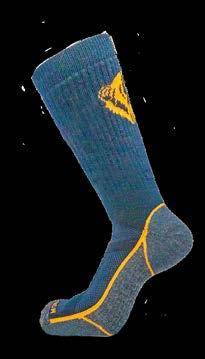
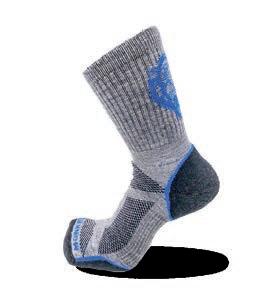

They don’t have the same incredible sense of smell and ability to sense electrical activity of nearby prey that sharks have. They don’t have the phenomenal eyesight of mantis shrimps, which can see far more colors than humans can. And they don’t use echolocation like dolphins and whales. So what secret weapon do seals use to find their prey in the dark waters of the sea? The answer just might tickle your fancy: it’s their whiskers!

While humans can’t move their facial hair, most mammals with whiskers can move them, and vibrations of these whiskers help the seals collect information about their surroundings. Elephant seals have the highest number of nerve fibers per whisker of any mammal, so they were an ideal choice for studying the role whiskers play in hunting. In an experiment, researchers placed video cameras on female northern elephant seals and observed what happened as they went hunting. The findings confirmed that seals’ whiskers are a key tool for helping them find dinner.
The cameras the seals wore emitted an infrared LED light that the seals couldn’t see but which could pick up the movement of their whiskers as they neared prey, even when seals were at depths that sunlight couldn’t reach. Scientists learned that elephant seals extend their whiskers beyond their mouth and rhythmically move them forward and backward to feel for movement in the water which might come from the wake of a swimming fish. This whisker movement also helps during a chase, giving seals the information they need to sense precisely where the prospective meal is. Though seals use other cues in hunting, such as tracking other animals’ bioluminescence, it turns out that their whiskers are the most important tool they use to find food.
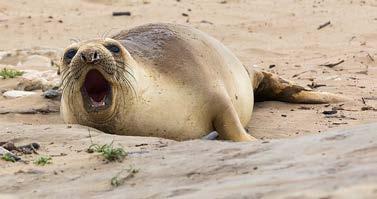


Dixie Jet Falcon Spoons are new for 2023 and available now at www.
DixieJetLures.com. The Falcon Spoon is the same height as Talon and Big Daddy, but half the width and weight of 1.8-ounce. Falcon spoons come in five colors: Shattered Glass, Prism Shad, Silver Shiner, Shattered Glass Sexy Shad, and Nickel. This spoon casts into the wind effortlessly and falls through the water column gracefully, enticing large fish to aggressively attack it. Made from marine grade brass. All Dixie Jet Spoons are made in the USA, with American Pride, proudly keeping jobs in America.
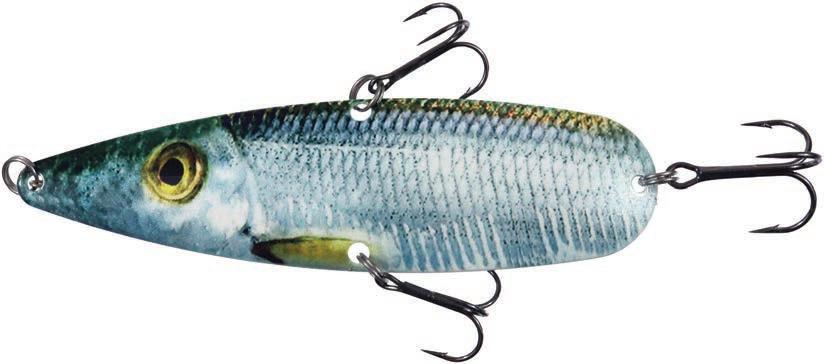
Lithium-ion battery technology can deliver ultra-lightweight power storage capabilities to give top-level competitors the edge they need. Lithium Pros provides total-package solutions for professional anglers who need reliable starting power while being as light and small as possible.
T925-16 Racing Battery Features:

• High-power lithium ion phosphate
• Ultra Lightweight design
• Starts high-horsepower, high-compression engines
• Discharges more energy late in the run or race
• Built-in charge protection board with dedicated ground
• Optional package with 1008 Racing Battery Charger
T925-16 Racing Battery Specs:
• 16V
• 16Ah (256Wh)
• 750 CA
You’ve probably been seeing these vinyl pilings a lot more lately! EcoPile vinyl-fiberglass composite pilings from American Pole & Timber are structural, easy to build with, and they are 100% impervious to attacks by wood boring organisms in water such as barnacles and shipworms. Fade resistant and UV/ IR-protected, their internal engineered hexagonal structure makes them amazingly strong and rigid. When people see and handle them up close, they always comment on how heavy and sturdy they are. They also provide an appealing uniform appearance and straight lines. Discover more and get pricing at VinylPilings.com/EcoPile.
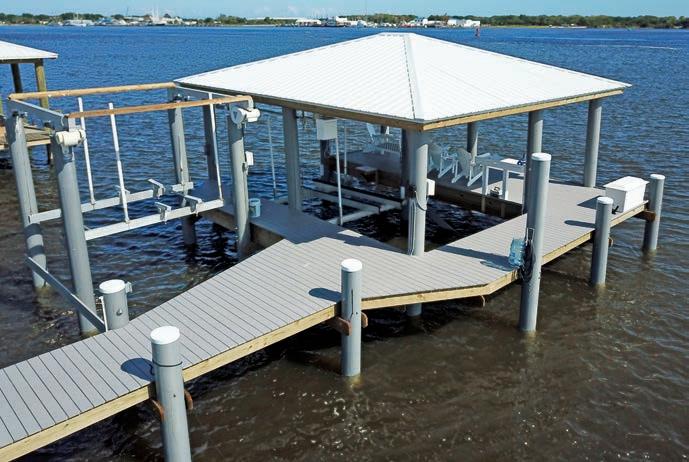
• Compact Sizing (6.875” L x 6.5” W x 5” T)
• 7.3vv lbs
• 80% Depth of Discharge
www.LithiumPros.com
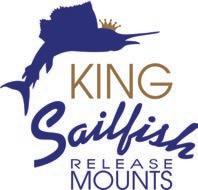
Saltwater Fish Mounts are available online from King Sailfish Mounts. KSM individually crafts each finely detailed mounted fish by hand, one at a time. Every reproduction is airbrushed to resemble that species’ most vivid and striking color patterns or a picture of your exact fish! Initially formed to promote the release of local Atlantic sailfish, King Sailfish continues to be the leader in marine conservation–now offering all sizes and species of saltwater fish mounts, including inshore species like redfish, speckled trout, flounder, drum, you name it! Order yours today at KingSailfishMounts.com

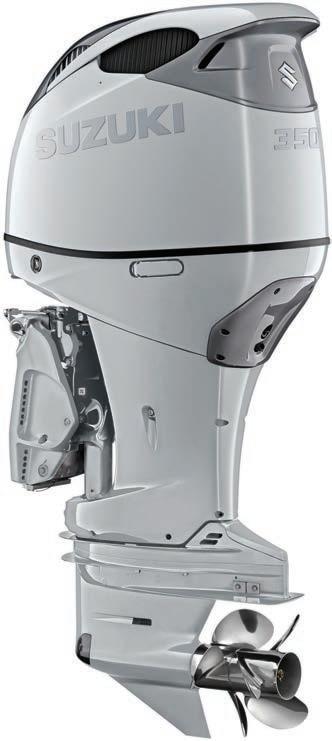
Two new-for-2023 Suzuki outboard models — the DF350AMD and DF300BMD — combine the proven advantages of Suzuki’s contra-rotating twin propellers with integrated steering and a newly engineered gear case.
Integrated steering allows for more streamlined rigging of the powerful V6 motors on a range of inshore, offshore, and freshwater boats. Integrated steering eliminates concerns about interference and clearance issues caused by external steering cylinders, making it easier to rig these motors on a variety of popular hull types in single, or multiple configurations.
These motors’ hydrodynamic new lower gear case enhances durability, increases top-speed performance, and improves fuel efficiency, while also making service and maintenance easier.
Visit www.SuzukiMarine.com to learn more.
Our warmest insulated jacket, the Windward was designed with warmth and wind protection in mind. Utilizing a body mapped GORE-TEX® INFINIUM™ face fabric is designed to keep you warm and dry even in the harshest fishing conditions.
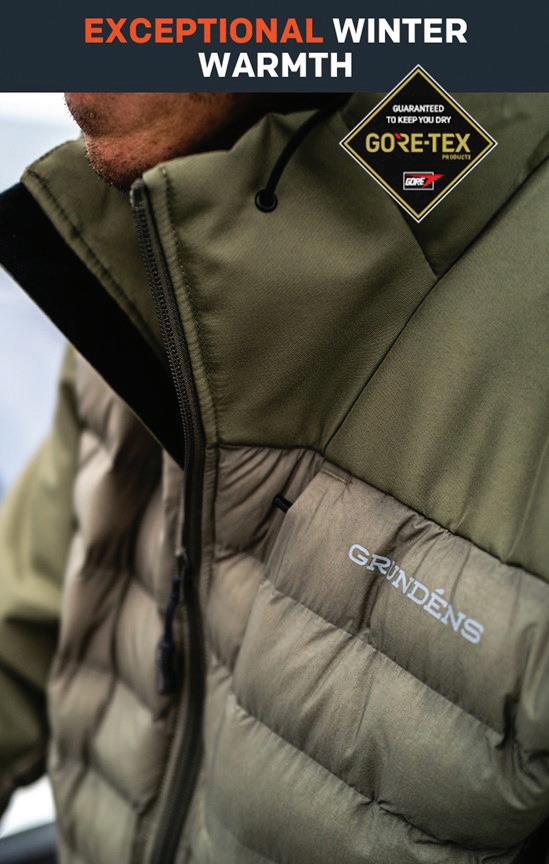
www.Grundens.com

Telephone 979-241-1705
Email binkgrimes@sbcglobal.net
Website matagordasunriselodge.com

March really gets it all started in Matagorda. Spring Break brings back the commerce to our little town as our businesses dust off the winter rust and welcome everyone back.
Flags are flying, crawfish are boiling, and boats are buzzing up and down the Intracoastal Waterway.
March jump starts the official spring fishing season. Regardless of the weather, we will still be chasing speckled trout and redfish along the deep shell and mud of East Bay. January and February were stellar for drifting with Down South Lures, Bass Assassins and MirrOlure Lil Johns.
Make no mistake, we expect to catch some heavy trout in March, while wading and drifting. You would be surprised how many big trout we release in East Matagorda Bay while jigging soft plastics out of the boat. While wading we will toss the same baits, but really enjoy the MirrOlure Soft Dine and all her favorite Corky cousins in the Texas Custom Lures colors.
We never discount West Matagorda Bay this time of year. Trout hang on the edges of the guts and sloughs and we gingerly wade these areas with plastics and Corkys. West Bay’s grass shorelines hold fishable water when spring blusters blow; and, depending how mild March becomes, the first signs of glass minnows could actually begin to show around Spring Break.
Redfish are pretty much a mainstay in March. Spots like Lake Austin, Oyster Lake, Crab Lake and Boggy are great March hideouts. Make long drifts with live shrimp under a popping cork, or anchor on reefs. The cool thing is we can still catch fish when the wind blows hard.

Redfish are not the only drum in abundance in March, juvenile black
drum, the eating kind, frequent reefs in West Matagorda Bay. Twin Islands, Shell Island and Oyster Lake are all proven black drum haunts in March. Live shrimp under a popping cork is the best bet.

Over-sized black drum, those over 30 inches, are the spawners and are only catch-and-release, but that doesn’t mean they are any less fun to catch. The big black bruisers frequent the channels, rivers and jetties leading to the Gulf, and a cracked blue crab is the most popular offering.
Spring Break in Matagorda comes alive with lots of families spending time together on the water and on the beach. We will run both morning and afternoon trips and are kid and family friendly.
We are two years past the great freeze of 2021, but it is not time to forget about its affects on our fishery. Most recreational anglers have shifted their focus to a more catch-and-release attitude of speckled trout. More guides and outfitters are doing the same; however, we need more of our local pros to get onboard and forget about all the fish-killing photos on social media. We need to take the lead and do what it best for our resource. The consensus among guides in Matagorda is we will petition TPWD to keep the 3-trout limit that is set to expire August 31, 2023. In addition to asking for further extension of the post-freeze regulations, we would love to see the maximum end of the trout length slot reduced from 23 inches to 20 inches.

Our trout fishery is recovering, but it can be so much more with a little more conservation and a lot more catch-and-release. Think about it.
Matagorda Sunrise Lodge and Properties will be at the Houston Fishing Show March 1-5 at the George R. Brown Convention Center. Come by and see all the gang and say hello.

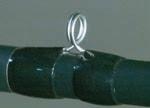

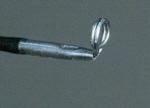
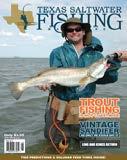

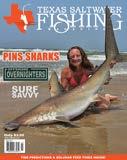


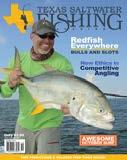



Telephone 361-785-6708
Email bayrats@tisd.net

Website www.bayrat.com
Facebook @captsgaryandshelliegray
Winter is on its way out and we will soon be patterning fish in more springlike conditions. We will also experience more days with strong southerly winds typical of springtime. Don’t be surprised though if Ol’ Mother Nature throws us a few strong cold fronts just to keep us on our toes. It is possible that we may still see some rapid swings in the thermometer from cold to hot and then cold again in just a span of a few days. This in fact can be the most challenging part of March fishing.

Even though we will be experiencing generally warming conditions I won’t venture far from the back lakes, most days. However, should we get some consecutively warm days you might find me browsing the sandier outside shorelines of the major bay systems. If the wind allows venturing into open water, my preference will be the oyster reefs in San Antonio Bay.
During the colder months I almost always slow my artificial lure presentations to a crawl. Slow-sinking baits paid off the most and were my biggest producers given the way they tend to hang in the strike zone longer and the somewhat lethargic fish didn’t have to put forth as much effort to eat it. This will begin to change as the water warms. During March I lean more toward twitchbaits to get the attention of my quarry. Twitch baits can be either hard or soft and you can choose between either suspending or sinking. They are a lure that is very easy to work with just a twitch of your rod tip. With a twitching retrieve, these baits dart side to side, imitating an injured bait fish. Their erratic movement is so irresistible that even the laziest fish usually can’t resist taking a swipe at it.
Some of my favorite hard twitchbaits are Mirrolure’s 17 MR and XL 27 MR MirrOdine. These hard twitchbaits are really some of the simplest of lures to throw. I really enjoy these baits for some of my beginners because it doesn’t take much finesse to make it look good. A few twitches with my Waterloo HP Lite, allowing the bait to sink a little before another soft twitch is usually all that is needed to draw a strike.
When it comes to a soft twitchbaits, MirrOlure’s Lil John is hard to beat. This unusually shaped, scented soft plastic does not appear to be much when viewed in the package. But when rigged on an 1/8 oz jighead and worked in the water, the erratic, crazy movement is too much for fish to ignore. I will even pause this bait, allowing it to hit bottom, kick up a little mud, and then twitch a few more times allowing it to fall again. I am able to do this type of retrieve this time of year only because the grass is not thick enough to cause any problems. Once the grass begins to get thicker I will twitch the Lil John a bit faster to keep it out of the grass or even possibly rig it weedless; but that’s more for April and May fishing.
One last bit of advice I want to provide is to treat prop scars as a type of structure, especially when fishing in 2 to 3 feet of water over soft bottom. Prop scars make excellent ambush points for game species to lie in wait for unsuspecting prey. Search out and fish these scars in the same way you would fish oyster beds, grass lines, or washouts. On sunny days my Costa glasses with copper lenses help me find the deeper prop scars by cutting the surface glare and giving me higher visual contrast and clarity. Working my offering all along and over prop scars while drifting in my Shallow Sport has really paid off for me. Give it a try next time.
In closing I want to mention that I have now been guiding twentyone years full time in the Port O’Connor-Seadrift area. I don’t know where the time has gone but I am thankful for all the experiences. Some great, some not so great. To have as much skin in the game as Gary and I do you know we must have a fantastic sense of humor and bountiful patience. I tell Gary we need to begin compiling our experiences for a book. It would make for a very humorous read, if nothing else. All in all it has been a wonderful ride, forming some very treasurable friendships and meeting some absolutely fantastic people along the way. God willing, I hope to continue this fantastic angling journey.
 Captain Shellie Gray was born in Port Lavaca and has been guiding in the Seadrift/Port O’Connor area full time for the past 19 years. Shellie specializes in wading for trout and redfish year round with artificial lures.
Captain Shellie Gray was born in Port Lavaca and has been guiding in the Seadrift/Port O’Connor area full time for the past 19 years. Shellie specializes in wading for trout and redfish year round with artificial lures.


“Springtime is the land awakening. The March winds are the morning yawn.”
-Lewis GrizzardDavid Rowsey has 30 years in Baffin and Upper Laguna Madre; trophy trout with artificial lures is his specialty. David has a great passion for conservation and encourages catch and release of trophy fish.


Telephone 361-960-0340
Website

www.DavidRowsey.com
Email david.rowsey@yahoo.com
Hope this article finds y’all ready for this crazy ex-wife of a month we call March. This old girl will have it all; including both fists up. But if you can take it, it’s about the best time to catch the heaviest of heavy trout.
Fighting wind is just part of the price we must pay to reach the end goal of catching a monster trout. March is the month they are most likely maxed out in weight. Bellies full of mullet, roe sacks packed with a million baby trout, and still winter-fat is what gets them there. If you land a fish that has all three weight components and measures longer than 28 inches, you could have a much sought-after specimen that lots of men and women are spending thousands pursuing.
The speckled trout is the money fish that drives every fishery from Sabine to the Brownsville Ship Channel. It deserves to be coddled and protected in the same manner as Inland Fisheries manages largemouth bass with their Share A Lunker program, wherein trophy bass of 13-plus pounds are maintained alive and donated to the program in effort that their superior genetics can be passed along through the Inland Fisheries hatchery and stocking programs. So, my question is why is that same emphasis not placed on trophy speckled trout for a similar economic impact and benefit for the state?
Speaking with field technicians in my home waters, I am told they are not seeing any significant increase yet in the trout population, which is a quiet concern that they harbor. We have got to be smart about this and put the trout fishery above politics and peer pressure from the groups that think it is somehow a God-given right to kill every trout they can stick a hook in. It’s just not sustainable in my view, especially if you ever want to see the days of a fishery that can produce trout of 7- to 10-pounds on any given day.
Louisiana is in really bad shape right now with their trout stocks 57% below historic mean levels. State politicians have caved to lobbyists and are making no changes per the suggestion of LDWF, who want to reduce bag limits and increase minimum length regulations immediately. Very scary stuff in this article that makes me proud to be a transplanted Texan via Louisiana.
@captdavidrowsey
Grassy, windward shorelines and shallow flats will be my focus during March. As the trout look to start distributing eggs, I intend to be waiting there the day they first make their move towards this pattern. Prolonged warming trends and longer days will be the key, especially toward the end of the month.
We are just now starting to see some positive signs from the enactment of the three trout bag limit that includes a slot length of 17-23” following the winter storm and fish kill that occurred in Feb 2021. Those regulatory changes are scheduled to sunset in August of 2023. Texas Parks and Wildlife Coastal Fisheries will soon make a proposal for the emergency regulations to be extended further, or revert to the former regulations of 5 trout per day, 15” minimum, one of which may be over 25”.
Like I said above; we are just now seeing signs of the fishery recovering and I fear that reverting to the former regulations in August will be too soon, and quite possibly devastating to the continued recovery of the fishery and quality of the Laguna Madre and Baffin fisheries that I call home.
Coastal Fisheries has done a tremendous job on so many levels, but managing the bays for numbers versus quality has been their weakest spot, in my opinion. Folks buying $100,000 dollar boats, tackle, etc., that helps support TPWD-CF, are not spending that money to participate in a fishery full of barely-legal trout, or soaking bait on bottom to catch the most prevalent fish in the bay – black drum.
https://lailluminator.com/2023/02/03/speckled-troutpopulation-falls-to-lowestlevel-ever-in-louisiana Folks, please take the time right now, get on the computer and leave comments with Texas Parks and Wildlife - Coastal Fisheries. Let them know what you see on the water and that we cannot afford to revert back to the old trout regulations at this time. Believe me, I’m down for it when the fishery can support it, but now is not that time. We need the postfreeze regulations to remain until the fishery makes greater gains in recovery. Let your voice be heard!
Remember the buffalo!
-Capt David Rowsey
The C.A.L. family of lures offer a wide variety of lure shapes for both freshwater and saltwater fishing. From small ponds to deep jigging ocean reefs, D.O.A. has you covered.


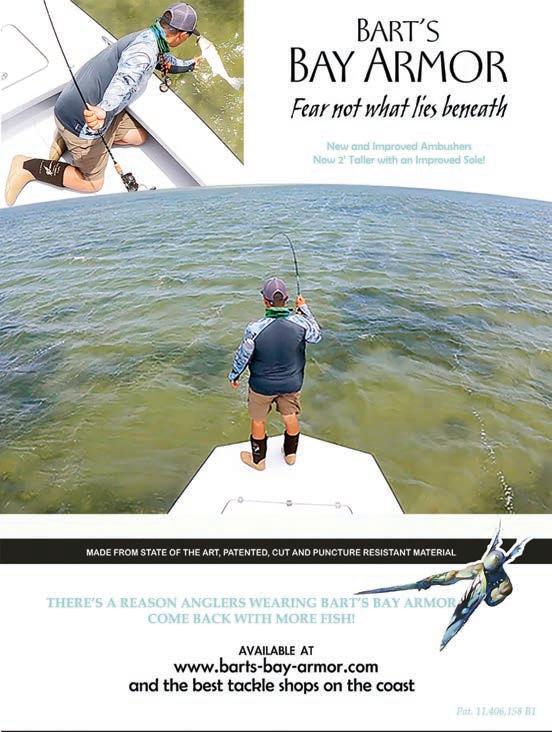
Made from tough soft plastic, each lure is made to match up perfectly to D.O.A. short and long shank jig heads.

Captain Wayne Davis has been fishing the Lower Laguna-Port Mansfield for over 20 years. He specializes in wade fishing with lures.
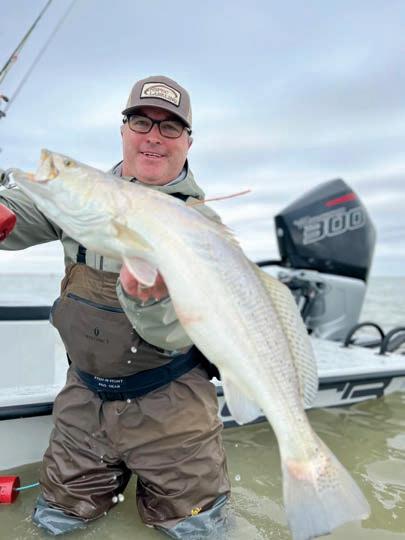

Telephone 210-287-3877
Email captwayne@kwigglers.com

Greetings from Port Mansfield! I am happy to report that trout fishing has been very good lately. Our Laguna continues to provide great habitat and the fishery seems to be thriving. With extensive seagrass meadows anchoring the marine food chain it is no wonder that so many anglers envy what we have down here. We’ve come close in several potentially catastrophic events, yet she seems to rebound and recover to provide a world-class fishery.
Speaking of a world-class fishery, let me relate what I experienced recently. I had three anglers, two from Alabama and one from San Antonio, and you can bet they were here for big trout. I love fishing my groups from Alabama, Louisiana, Mississippi and even Florida; simply because most of the time all we need to do is catch a five-pounder or better for them to establish a new PB record. We’ve done well recently in landing this class of fish, not to mention literally hundreds of solid two- to four-pounders.
Our first day, which was also the maiden voyage for my new 2023 SCB Recon, had us working big grass beds and scattered potholes. The winds were not in our favor but one of my guys landed a solid four-pounder. All smiles amongst the group, which kept spirits high. As we continued, I felt like there had to be a better spot; based on the previous week’s weather, plus we were lined up with a perfect lunar period with warming water. I elected to move and our next wade began with some two-to four-pounders. I noticed they were quite plump, which lifted my spirits even more for what a 27-incher might weigh. Easing along and probing every pothole and flicker of bait, the bite was slow on plastics but the angler chunking the topwater was enjoying steadier action. Hardheaded, but not completely dumb, I tied on a Mansfield Knocker and started getting some slaps, swirls, and misses. A few casts later I landed a solid fish and noticed a mullet tail sticking out of the trout’s throat. Thirty minutes later I connect with a good fish, a fat 27-inch seven-pounder. She was tagged for Harte Research and quickly released.
The next day had us lined up on the same spot. In short order Jay Fowler, still tossing the same topwater, connected with a good one, his PB (at the time) coming in at 8 pounds - 28.25 inches, (see photo). Another successful tag and release. Our wade slowed to barely a crawl and we hadn’t moved 30 yards from the boat. We really dialed in to our surroundings and probed what seemed like every blade of grass instead of every grass bed. This continued with solid catches of trout all day, with a good number again

having mullet tails sticking out of their throats. Being hardheaded, I guess, I went back to plastics, but again it was slow for me, but not for the others throwing topwaters. We continued, only wading about 300 yards all day, never starting the motor until it was time to go in.
Day three had us back at the spot yet again, only this time we left the dock extremely early, running in pitch black and settling in well before daylight. The day started slowly but as the solunar major approached the guys on topwaters started getting action. Still hardheaded, I stuck with my plastic. It was at this moment I realized the fish were not eating them – period! Heck, they were stuffed with mullet as we noted, and all their bellies were fat and hard. An ah-ha moment…topwaters were the key to drawing reaction strikes…I even tried a Double D but still very few strikes. So, we spent the entire third day having the time of our lives on topwaters. Jay Fowler, who started off and stayed with the same topwater all three days, was the angler to envy. The term “icing on the cake” gifted him on his last fish of the third day, shattering his previous day’s personal best; the photo of which will come later.
So, what’s the moral of the story besides living and walking in a world-class fishery? Listen, and look at what the fish are telling you. If you find fish so full and fat that it would be a miracle that they could swallow anything more, you might consider a topwater to appeal purely to their aggressive predatory nature.
Big news! The FTU G2 Green Spinning Rod is now available in limited supply. Grab one quick because I’m sure they’ll sell out quickly. Remember, fresh is better than frozen.
View The Video Open Camera and hover over QR Code. When link appears at top of screen tap to open in YouTube. The Wait Is Finally Over: FTU Excel Gen2 Green Spinning Rods



I announced recently that I signed with Z-Man Fishing Products, a company based in Charleston, South Carolina. I was invited to visit their factory last fall and witnessed a smooth-running operation that produces soft plastics of a wide range of styles, sizes, and colors to target many species of fish around the world. I have used Z-Man baits extensively over the past months and find them very effective. I am thus far very pleased with their performance and durability.
Cell 956-266-6454
Website www.tightlinescharters.com

Everyone has their personal toughest fishing month. Catch rates decline for a variety of reasons; some of which might be difficult weather patterns or perhaps heavy boat traffic; for me it’s mostly weather related. March is one of the windiest months with gusting 25-35 mph wind almost daily. Many days we are forced to fish protected areas with decent water clarity, not necessarily where fish might be most concentrated. Checking Google Maps for areas with heavy grassy bottom is suggested as the grass helps hold bottom sediments in place, even on the windiest days. With this in mind, during March, I tend to fish more on the east side of the ICW, where the water remains relatively clear even in blustery conditions.
Strong wind means the water will be more highly-oxygenated on average, which relates to more aggressive feeding behavior. Persistent strong wind also influences baitfish movement and migration, which means bait will often be more concentrated along windblown shorelines. If you prefer drifting rather than wading, I recommend deploying two drift anchors to help slow your drift. Don’t let extreme wind ruin your day; using it to your advantage can bring you some luck.
One more thing to remember about less than ideal water clarity. When fish cannot see your lure so well they can still zero in on it when it produces vibration and rattling sounds in the water. This is where the rhythmic thumping of the large paddle tail of the 5-inch Z-Man Diezel MinnowZ becomes more effective than other soft plastics. The sheer size of the lure and greater buoyancy of the Elaztech material it is made of also aids in keeping it out of the grass during the presentation. Topwaters can also be effective in drawing strikes in somewhat murky water conditions for the same reasons.
Our trout fishery continues to show steady improvement, thanks to the post-freeze regulations enacted by TPWD and the generally more conservative attitude of so many anglers now practicing catch and release. There is still a noticeable lack of true heavyweights but we have definitely been finding encouraging numbers of four- to six-pound fish with occasional sevens.
During the colder months it is common for trout to travel back
and forth from shallow to deep water according to conditions, but now in March they will remain in shallow water for longer periods as temperatures continue to rise. The females will be in spawning mode soon and a noticeable weight gain in the females will occur as they feed heavily on bigger mullet and their eggs start to develop.
Here are a few places to look for trophies this spring. You can start by concentrating on areas that contain numerous potholes in knee to thigh depths. Trout are very opportunistic predators and potholes offer excellent ambush points.
Next would be shallow windblown shorelines where mullet often become stacked due to the force of the wind. The best of these also have plenty of grass on bottom where trout can hide and ambush their prey.
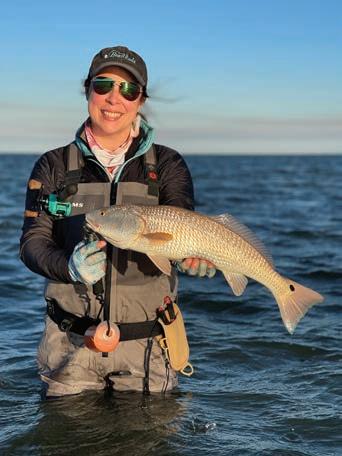
Finally, the windward and leeward edges of spoil islands also provide ideal structure to attract bait and camouflage predators lying in ambush. You might be surprised the number of truly large trout we find during springtime using spoil islands.

Now catching them can be a whole other story. Patience and stealth are always factors that enhance success, along with paying attention to tide movement and solunar feeding periods. And, as always, having the right lures is also very important. Smaller topwaters, for sure, and I would also encourage that you check out the many Z-Man products in natural colors at zmanfishing.com
I will be working in the Fishing Tackle Unlimited booth during the Houston Fishing Show at the Geo. R. Brown. The show runs March 1-5, and I will be there March 3 and 4. FTU just received a fresh stock of their Excel G2 rods in both casting and spinning models so be sure to check them out. FTU and many other exhibitors will be offering special pricing on many products. This is one show you don’t want to miss.
 View The Video
Open Camera and hover over QR Code. When link appears at top of screen tap to open in YouTube.
Z-Man Soft Plastic Rigging Tips
A Brownsville-area native, Capt. Ernest Cisneros fishes the Lower Laguna Madre from Port Mansfield to Port Isabel. Ernest specializes in wading and poled skiff adventures for snook, trout, and redfish.
View The Video
Open Camera and hover over QR Code. When link appears at top of screen tap to open in YouTube.
Z-Man Soft Plastic Rigging Tips
A Brownsville-area native, Capt. Ernest Cisneros fishes the Lower Laguna Madre from Port Mansfield to Port Isabel. Ernest specializes in wading and poled skiff adventures for snook, trout, and redfish.
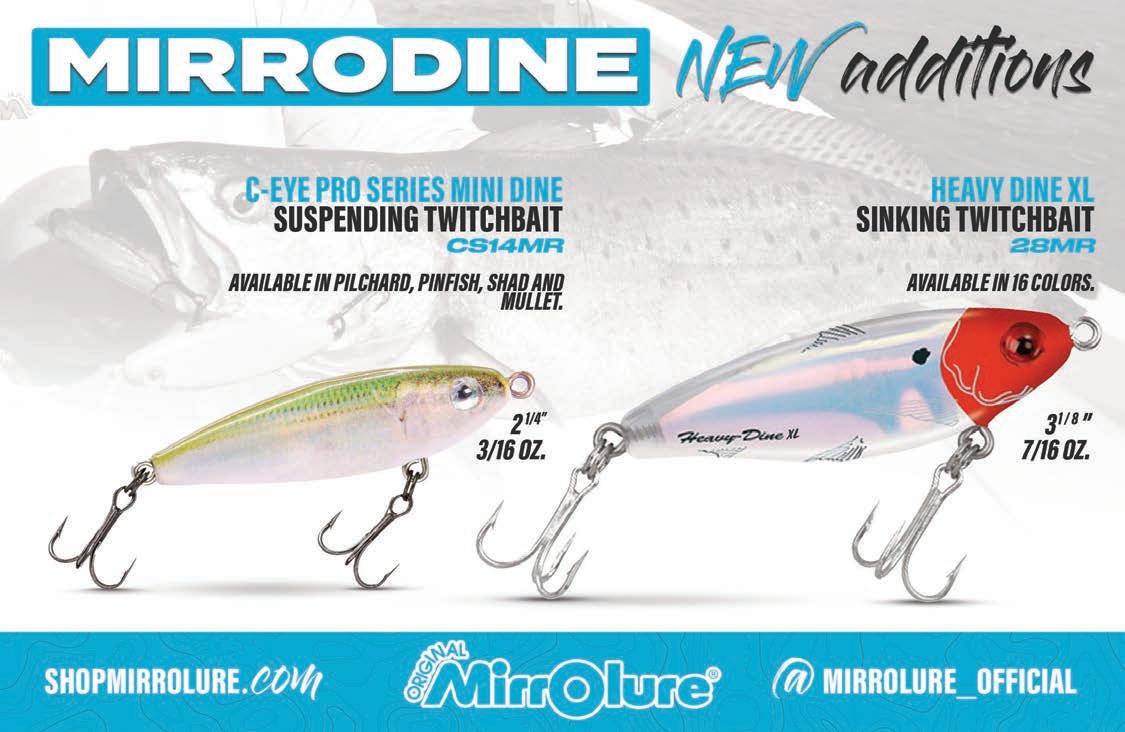
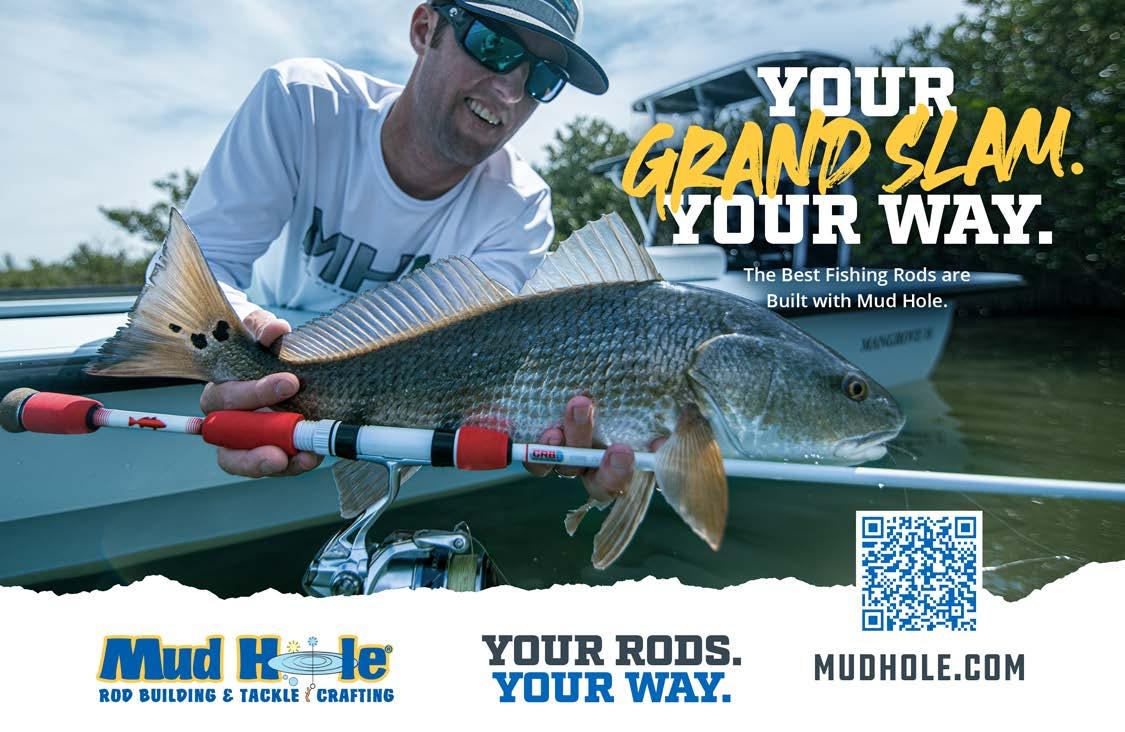

Silver King Adventures - silverkingadventures.com - 409.935.7242
James likes the options which create good catching opportunities in the Galveston area during March. “March is a great month to wade. The trout and reds tend to move into shallow areas like the coves and lakes and stay there. Fishing along the main-bay shorelines is also good. We catch ‘em regularly on hard baits like Catch 2000s, also the smaller Soft-Dines this time of year. Sometimes, the fish bite ‘em best when they’re just reeled straight in, without any twitching of the rod tip. Action is also good on topwaters at times, especially the small ones like She Pups. The reds really attack those on some of the better March days. It’s a good time of year to catch some pretty big trout, of course, and the bite gets a bit steadier as the weather and water temperatures warm up some. Most of the time, we’re catching best over a sandy bottom, with some scattered shell this time of year, but areas with some soft, muddy bottom close by are often really good too. It’s possible to catch good numbers of regular-sized trout out of the boat when winds aren’t too strong. Soft plastics like Assassin Sea Shads work best when drifting.”
Jimmy West | Bolivar Guide Service - 409.996.3054
Jim says the fishing had been best in shallow areas on days leading up to him giving this report. “We’re catching our fish shallow most of the time, sometimes out in water up to our waists, but more often right up close to the bank. This pattern should continue into March, so wading is the primary way to target the fish this time of year. Since we usually have a good many windy days in March, it’s a good thing the fish want to be near the shorelines, since the water out in the middle gets mucked up anyway. All the rains we have had lately in the watersheds north of here have the Trinity River running pretty high, and we’re starting to see lots of freshwater in the back part of East Bay and up in the bayous. If we get much more runoff, the fish will be pressured out of there. They’ll turn up in the area where the water is slightly salty, instead of fully fresh. We’ve had good luck with Paul Brown Lures lately, and that should continue into March. Topwater bite should pick up in March too. Of course, when we’re in the bayous, we’ll be throwing tails.”
West Galveston - Bastrop - Christmas - Chocolate Bays
Randall Groves | Groves Guide Service
979.849.7019 - 979.864.9323
Randall looks forward to the arrival of spring with great anticipation, partly centered around the arrival of one of the favorite food sources of the trout and redfish. “March is the month when the glass minnows usually start showing up. When they do, the fish want to gorge on them, so it’s important to fish close to where there are concentrations of them. This means fishing in areas with some grass growing from the bottom in the shallows, meaning mostly the coves and back-lakes. We look for the dark clouds of minnows and to see them jumping when picking places to fish. We also watch where the smaller terns are repeatedly diving. When targeting trout and reds around the clouds of glass minnows, several lures work well. Chrome/blue Spook Juniors produce lots of blow ups on the calmer days. When the winds crank up, which they regularly do, red magic Norton Sand Eels work better than the topwaters. Smaller slow-sinking twitch baits work well for some people too.” Randall also mentions he has recently added some
boat slips to his place, and that one is available to rent, also that he has some sites open in his RV Park.
Charlie Paradoski - 713.725.2401
Charlie explains the details related to a variety of options for catching in the Matagorda area in March. “We catch good numbers of big trout this time of year wading the shorelines in East Bay. With the increase in southeast winds, the action is usually better on the protected side, but the catching can be good in the off-colored water on the north shoreline at times too. We throw slow-sinkers and topwaters most of the time when we’re targeting the big trout by wading. Fishing out of the boat usually produces better numbers of trout, with an occasional big fish thrown in. We catch best out of the boat on soft plastics. Fairly heavy jigheads usually help keep the lures in contact with the bottom. Too much wind ruins these plans. When winds are really strong, we head into the Colorado River to hide from it, and the catching can be great in there, for both trout and reds, at times. Wading the pockets and coves on the south shoreline of West Bay is great for reds. The fish tend to stay close to the little patch reefs way up in the shallows. They’re normally aggressive toward topwaters.”
Palacios | Capt. Aaron Wollam
www.palaciosguideservice.com
- 979.240.8204
I have great news to report after the freeze which hit the coast prior to this month. Fishing continues to be good in our local bays! Redfish have been plentiful lately. We have been targeting them in several locations. Our low winter tides have the reds stacked out in front of drains and bayous on falling tides. Crystal clear wintertime water has made for some phenomenal sight-fishing. For this, the best lure has been the old reliable Norton Bull Minnow in pumpkinseed/chartreuse. The reds will absolutely smash this tail when they see it come close by. On normal or big tides these fish have been way back up in the ditches and sloughs, feeding on crabs and grass shrimp. In those places, gold spoons have worked better to earn strikes. The trout bite has been good, but we’re not landing many slot fish. Instead, we’re catching lots of 15 and 16” fish, which bodes well for the upcoming year. Local shorelines with shell reefs lying in three to four feet of water have been holding plenty of trout. As we finish our late-winter fishing, we’ll continue to fish around active bait, like jumping mullet and shad in the main bays, grass shrimp when we’re in the marsh.
Port O’Connor | Lynn Smith
Back Bay Guide Service - 361.935.6833
Lynn likes fishing for some of the biggest trout in the area during March. “We spend most of our time wading this month, targeting the bigger trout in shallow areas, usually where the bottom is a mix of mud, sand and shell. As the water warms up in the early part of spring, the fish tend to move out of the deeper guts and channels and stay on the flats more of the time. With so much bait moving into the bays, it’s important to stay around concentrations of mullet and other small fish as much as possible. We normally see an influx of shad, glass minnows, perch and shrimp this time of year. Some of the best catching takes place when we find big concentrations of a variety of the small prey species. Catching is great
most of the time on topwaters in March. We throw Spook Juniors, also some of the bigger plugs. We also do really well on slow-sinking twitch baits like Paul Brown Lures, Catch 5s and others. I’ll probably be spending more of my time down south during the spring this year, as the fishing is better over that way, with a few more big trout.”
Rockport | Blake Muirhead
Gator Trout Guide Service - 361.790.5203 or 361.441.3894
Blake expects the excellent run of fishing he was experiencing when we talked to him to extend through most of March. “I’m still fishing shallow areas along shorelines mostly, where the bottom is a mix of sand and grass. All the local bays have areas which fit this description. Some of the most reliable ones lie close to drains and bayous which connect the main bays to the backwater areas. Since I was hunting ducks in the backwater areas all winter, I have a good grasp of where the schools of reds have been concentrated in those places. So, we’re able to target them there. The trout bite is better on the main bay shorelines most of the time, and the number of trout up in the shallows tends to improve as we get into March. Normally, the fishing remains easy for me until about the time we get the bull tide of spring, which happens late in March, sometimes in April. Then, the fish scatter, and it gets tougher for a while. Catching is best these days on small topwaters like Spook Juniors when the bite is easy, soft plastics like Sand Eels and Gulp! lures when it’s tougher.”
Upper Laguna Madre - Baffin Bay - Land Cut
Robert Zapata | rz1528@grandecom.net - 361.563.1160
I really enjoy fishing during the month of March, while the fish are recovering from the cold water temperatures of winter and beginning to feed more regularly and aggressively. The warming water temperatures bring the trout and redfish into shallow water, with many of them found in depths less than three feet most of the time, especially after several sunny days in a row. Usually, the water is still too cool for wet wading, so I wear my waders and ForEverLast Ray Guards on a daily basis this month. Most of the water in the Upper Laguna Madre is in good shape recently, and finding structures holding fish should be fairly easy. I’m focusing on places with gradual drop-offs with potholes in the grass, also edges of the grass beds and rock formations. The trout will always be following their food sources, so we spend time looking for popping slicks and jumping mullet. I also pay attention to gulls hovering over shallow water. In the clear water, I prefer natural colored Bass Assassins Die Dappers, and if the water’s murky, I switch over to brighter or darker ones, almost always rigging them on eighth-ounce Spring-Lock jigheads.
Fishing options in the Corpus Christi area in March depend greatly on what type of late-winter/early-spring weather patterns develop during the Spring Break month, Joe says. “If we continue to get some lateseason cold fronts, the fishing for big trout on the King Ranch Shoreline and in Baffin Bay can be great this month. Normally, the fishing down south is better while the winds are still blowing out of the north, and it gets better on the King Ranch once the winds shift back around to the southeast and start blowing at the bank. If we have a steady, warm onshore wind most of the month, the fishing will generally be better in places like the Land Cut, Rocky Slough, Summer House, the Meadows, Yarbrough Flats and the Middle Grounds down south. Strong onshore flow can also elevate the potential for catching on the flats around the JFK Causeway and in protected pockets on the south shoreline of Corpus Christi Bay, like Shamrock Cove, Little Flats, and East Flats. When lighter winds prevail, sight-casting opportunities become numerous on flats in the ULM, since the trout, redfish and black drum all stay in shallow water much of the time this month.”

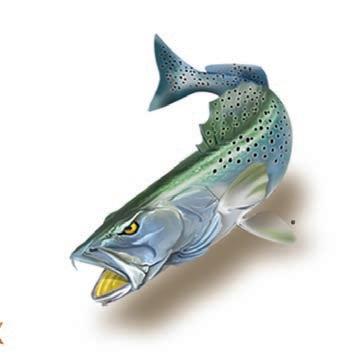
361.877.3583 - Oceanepics.com
Winter is essentially out the door, which means the return of many gamefish to the surf. Our roller coaster winter weather had the fish confused. As the water warms, action should explode! There will be a great variety of species readily available in the surf and a few bonus surprises too. Red and black drum will still remain in the surf, and as the water warms, expect the chance at hooking up to a powerhouse jack crevalle to increase. Pound for pound, jacks are arguably the strongest fighting fish caught in the surf. When using mullet, the chances at either a red or a jack will be quite high. The pompano bite should be fair this spring, despite a slow winter, if the water is relatively clear and hasn’t warmed up too much. Shrimp and Fishbites combos are usually a winner for these tasty fish. Sharks will start to invade the shallows this month. Expect residual sandbar sharks in early-March, phasing out to large blacktip and scalloped hammerheads by the end of the month. All these sharks should be around, feeding on an array of smaller fish, like whiting. Any large tigers and makos present will be hunting schools of jack crevalle or little tunny.
Port Mansfield | Ruben Garza
Snookdudecharters.com - 832.385.1431
Getaway Adventures Lodge - 956.944.4000
Cold fronts will soon be diminishing, usually right around the time Spring Break is upon us. Warming trends in March often produce weirdly unpredictable weather patterns. It can be cold, warm ,rainy or windy. This month, I like to stick around The Saucer area, either fishing directly behind the cabins or right by the ditch. I always find at least a few solid trout around the ditch. Topwaters like Mansfield Knocker in Ruby Tuesday and soft plastics like Lagunaflauge Ball-tail Shads on eighthounce jigheads are favorites. Either lure should be tested first right along the drop-off, then cast into deeper water if necessary. The blow ups on the topwaters are often violent, the strikes on the soft plastics usually a soft tap, or the line just gets tight. If the winds are light, the spoil dumps just north of Bennies Island can be productive. Topwater action is usually good there first thing in the morning. If not, KWigglers in Mansfield Margarita or plum/chartreuse Ball-tail Shads should do the trick. The action for all three main species can be good there. Up north, the mouth of Little Bay is a good spot to try, both drifting and wading. Mostly, we find fish there in potholes in about three feet of water.
Lower Laguna Madre - South Padre - Port Isabel
Aaron Cisneros | tightlinescharters.com - 956.639.1941
Our fish have left the deeper water, and lately, we are finding most of our fish in areas with depths ranging from a foot to maybe three feet. Trout fishing has been good when tides are moving in with some strength. Keeper-sized trout have been found schooling on shallow flats lying adjacent to ICW, within no more than a couple hundred yards or so. We’re catching most of our trout in water about two feet deep, using Z-Man StrikerZ soft plastics in pearl color rigged on eighth-ounce Trout Eye jigheads. The redfish bite has been great in the really shallow water. When temperatures are running on the warm side, we’re finding large numbers of reds in one to two feet of water, mostly over a sandy bottom, which makes seeing them easier, and facilitates sight-casting. Z-Man scented PaddlerZ in redbone color rigged on eighth-ounce Redfish Eye jigheads have been earning plenty of strikes from the reds. Best bet for finding concentrations of fish is to look for big schools of water in the proper depths. The fishing has been most productive on the windy days. The calmer days cause the currents to fall slack, and the bite can be somewhat sluggish.



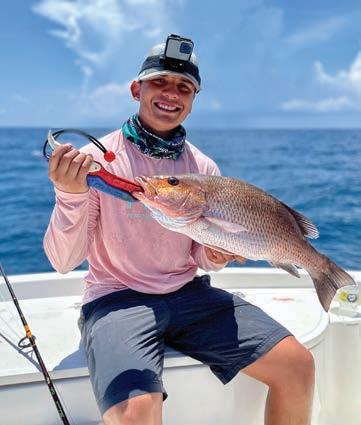
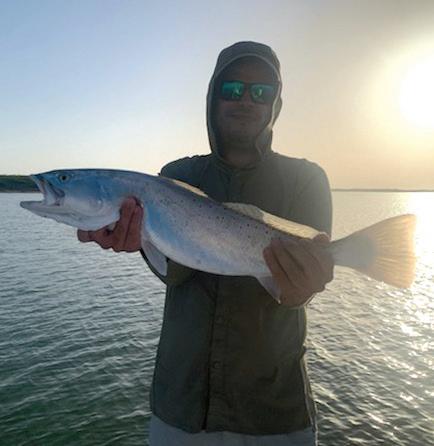

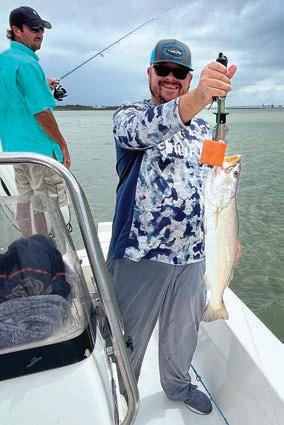

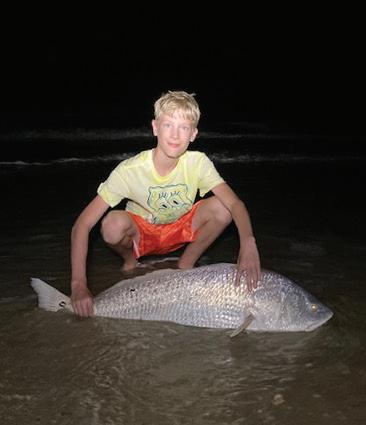
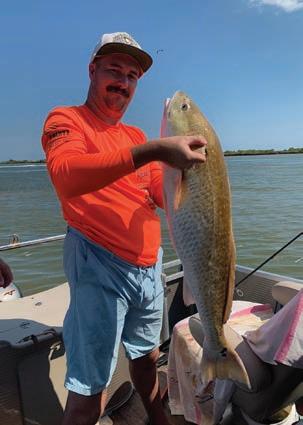

First come – first published! Photos are judged on artistic merit and sporting ethic displayed. No stringer, cleaning table, or hanging board images allowed. Digital images only. Adjust camera to high or best quality. All images become property of TSFMag. Email to: Photos@TSFMag.com Include short description of your catch with name, date, bay system, etc.



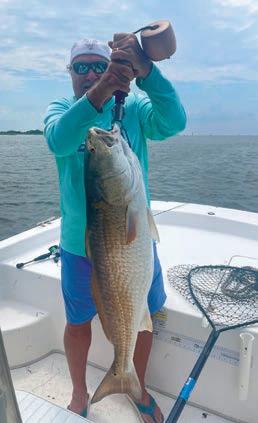

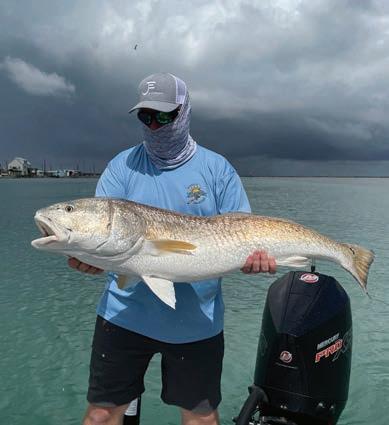
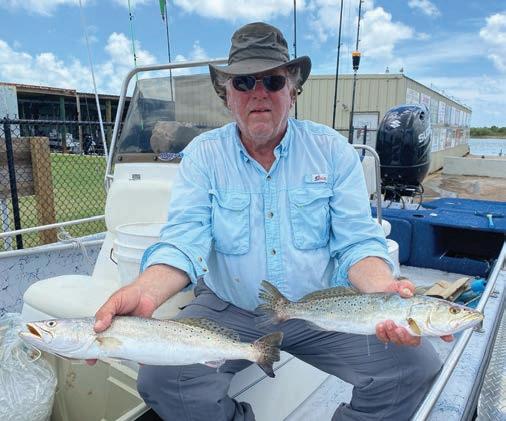
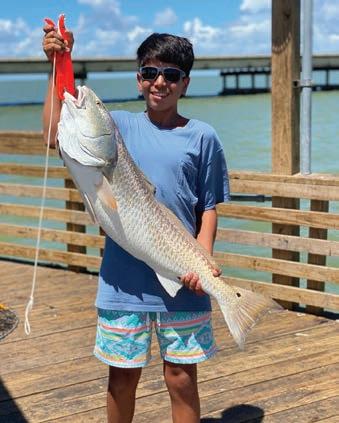 Skye Alaniz Corpus Christi Bay - first catch!
Connor Bartula East Matagorda Bay - 26” trout
Tood Woods West Matagorda Bay - 29.5” redfish CPR
Tristan Gutierrez Port Lavaca - 38.5” bull red
Larry Sinclair Redfish Bay - personal best red!
Gary Damuth POC - trout
Kent Turner & Jamie Pinter POC offshore - 120 lb tarpon CPR
Skye Alaniz Corpus Christi Bay - first catch!
Connor Bartula East Matagorda Bay - 26” trout
Tood Woods West Matagorda Bay - 29.5” redfish CPR
Tristan Gutierrez Port Lavaca - 38.5” bull red
Larry Sinclair Redfish Bay - personal best red!
Gary Damuth POC - trout
Kent Turner & Jamie Pinter POC offshore - 120 lb tarpon CPR
4 ounces cream cheese, at room temperature
1/2 cup shredded part-skim mozzarella
1/2 cup sour cream
1/4 cup mayonnaise
1/4 cup grated Parmesan
2 Tbsp plain dried breadcrumbs - Divided
1/2 teaspoon salt – Divided

1 Tbsp unsalted butter
1/2 Tbsp unsalted butter melted
1/2 pound lump Crabmeat (for dips I use
Bumble Bee Lump in a can, much cheaper)
3 cloves garlic, thinly sliced
1/4 tsp crushed red pepper flakes
1/2 cup dry white wine
1/2 cup fresh parsley leaves, finely chopped

1 teaspoon lemon zest
2 cups of Phyllo Dough
Place an oven rack in the middle position, and preheat to 375 degrees F. Beat the cream cheese, mozzarella, sour cream, mayonnaise, Parmesan, 1 tablespoon of the breadcrumbs and 1/4 teaspoon salt in a large bowl with an electric mixer on medium high until smooth. Cover and refrigerate until ready to add the crab mixture. Melt 1 tablespoon butter in a large skillet over medium-low heat. Add the crab, garlic, 1/4 teaspoon salt and the red pepper flakes, and cook, stirring frequently, about 2 minutes. Add the wine, bring to a simmer, and cook about 2 minutes (there will be some liquid left in the skillet). Remove the skillet from the heat and let the crab mixture cool completely.
Meanwhile, mix the parsley, the remaining 1 tablespoon breadcrumbs, 1/2 tablespoon melted butter, lemon zest, and a pinch of salt in a small bowl. Stir the cooled pan of crab sauce, and cream cheese mixtures together, combine well.
*Optional: The dip and breadcrumb mixture can be refrigerated overnight separately. Transfer crab mixture to a gallon baggie and make a small snip on one corner, squeeze mixture into phyllo cups. Sprinkle tops with the breadcrumb mixture and bake until hot and bubbly, 10 to 12 minutes.


Let rest for a few minutes, then serve.
Yield - 8 to 10 servings









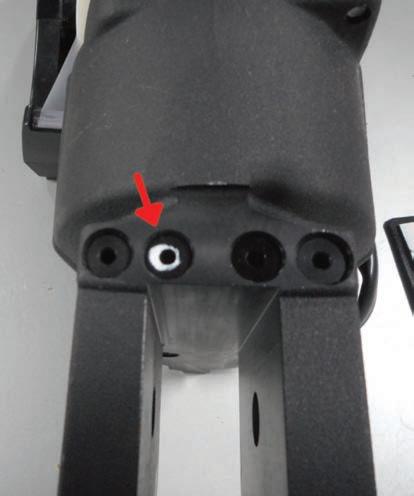
There are many good outboard motor jackplates on the market and the all-in-one units are the more efficient to install. CMC and Bob’s Machine are the brands we primarily sell and service.


After installing a replacement unit recently, after several uses, the customer reported being unable to lower the engine while the boat was underway. Puzzling that the unit functioned flawlessly in both directions when not underway. A test run confirmed the condition, so we contacted Bob’s technical support to discuss the problem. There are four screws on the bottom of the hydraulic unit which are accessible from the back when the boat is on the trailer. The second screw from the left has a silicone cover. Removing the silicone allows access to a 3mm hex-head screw, that when turned clockwise will increase the downward hydraulic pressure. A straightforward and simple remedy that we were not aware of and now, hopefully, a quick fix that might help another angler in need.
Have a great Spring season!
Thank you
Chris Mapp Coastal Bend Marine | Port O’Connor, TX 361-983-4841 | chrismapp@coastalbendmarine.com
